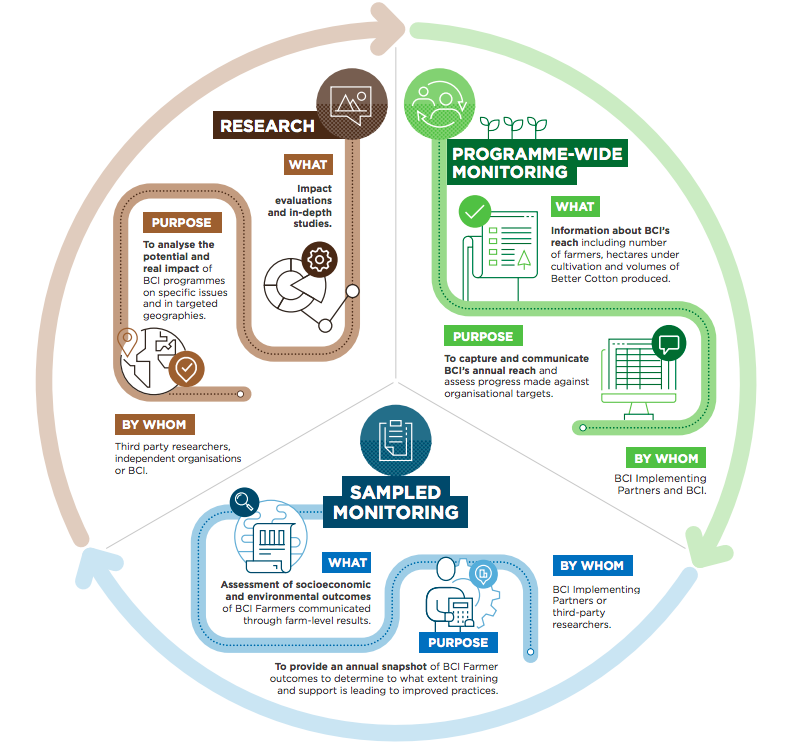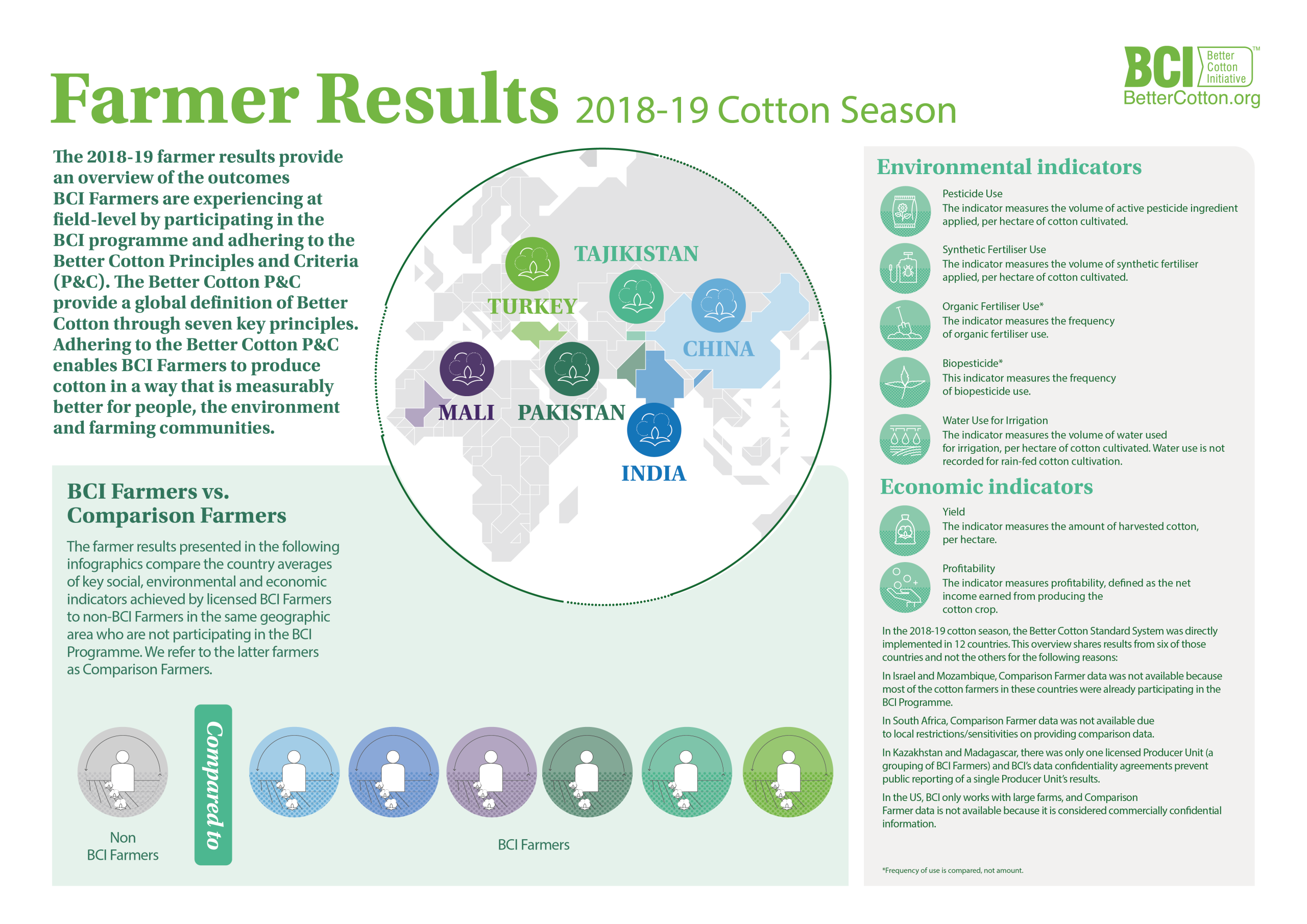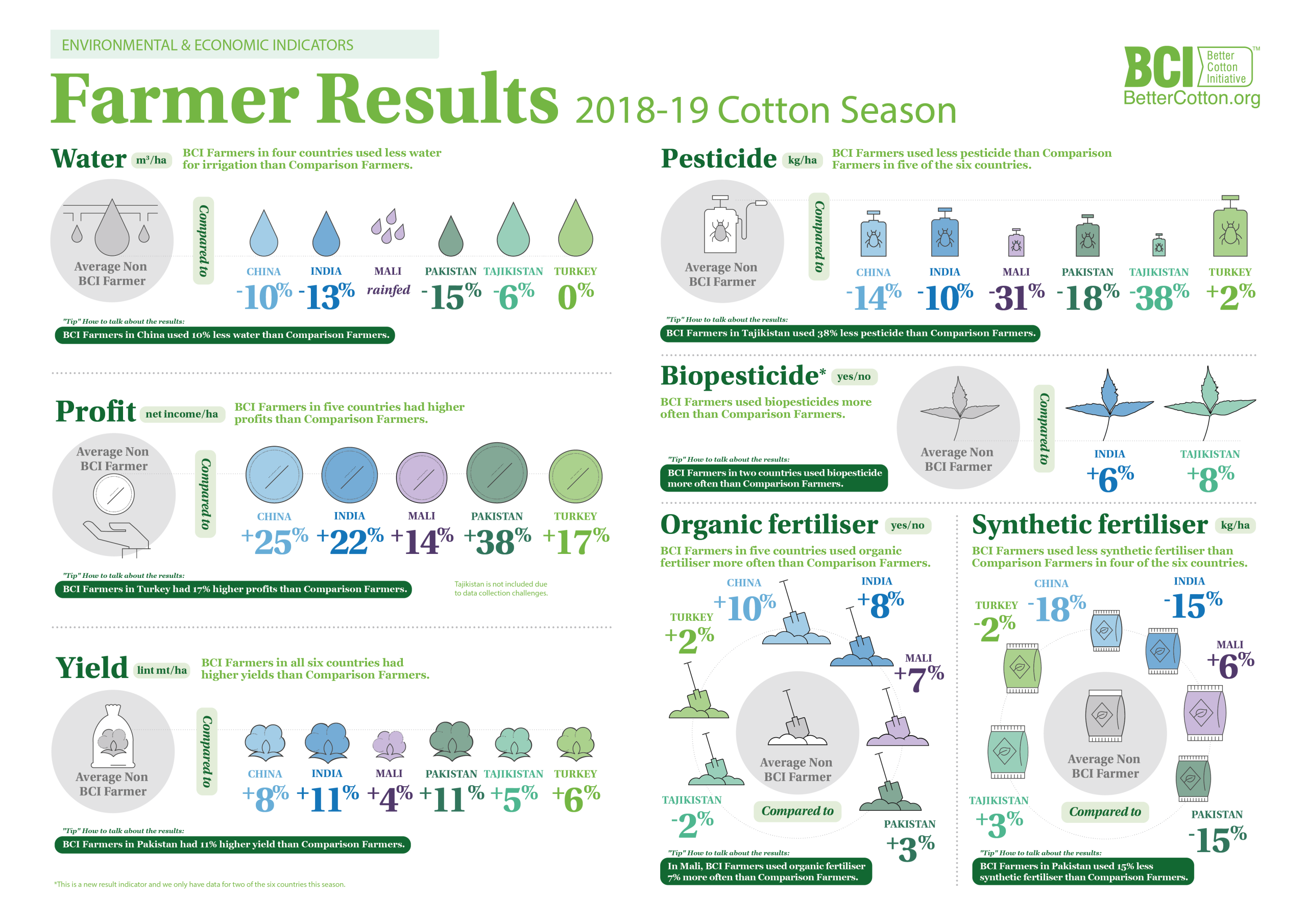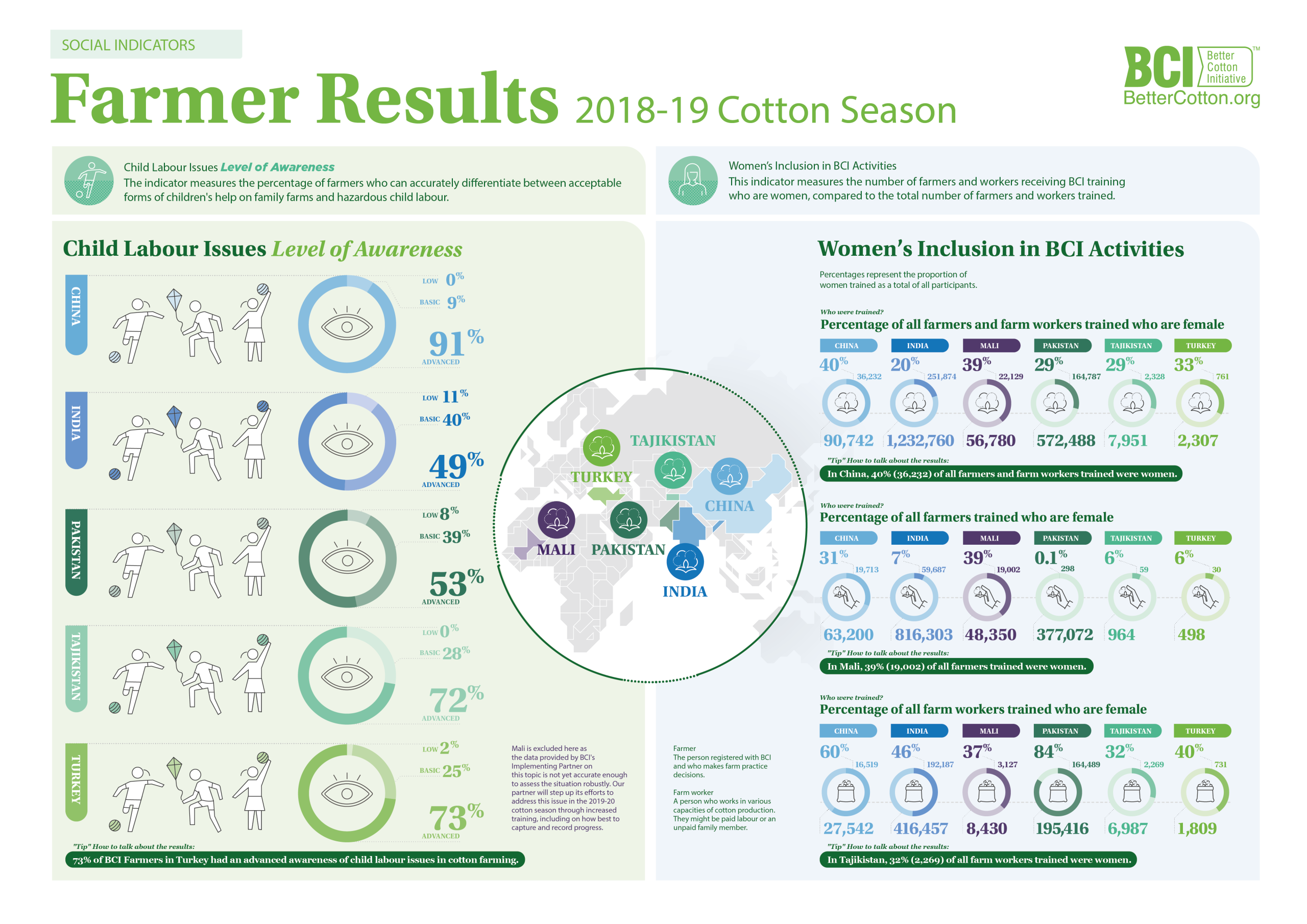Better Cotton Farmer Results
2018-2019
Discover the outcomes Better Cotton Farmers experienced in the 2018-2019 cotton season by participating in the Better Cotton programme.
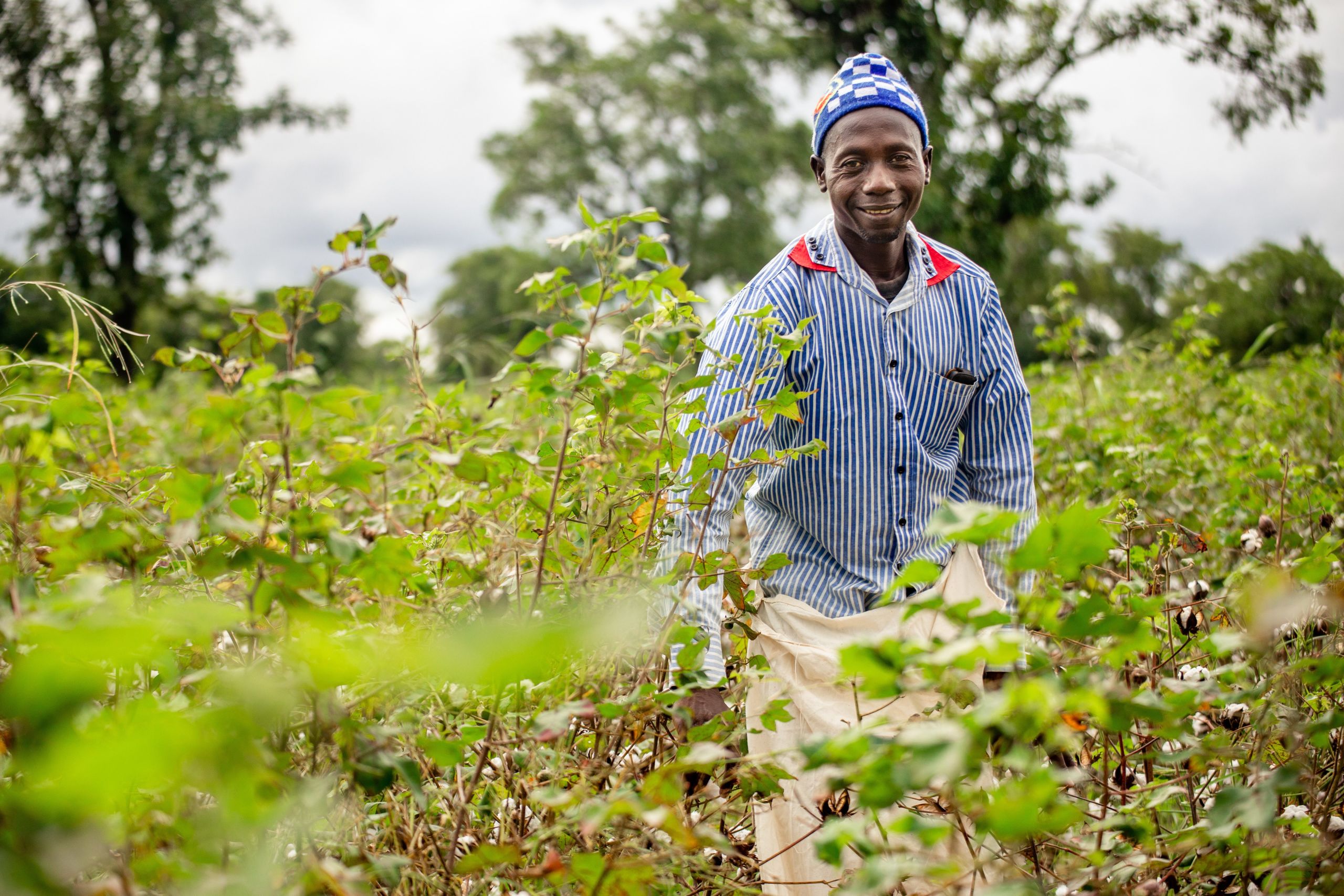
Measuring Results and Impact
Monitoring and Evaluation Programme
BCI is committed to measuring sustainability improvements everywhere Better Cotton is produced and to evaluating the environmental, social and economic results of the Better Cotton Standard System.
BCI uses complementary research and evaluation methods and works with independent organisations and researchers to assess field-level impacts. This diversity of approaches is necessary to effectively measure results and impact both at scale and in depth.
In this report, the 2018-19 BCI Farmer Results, we will share the social, economic and environmental outcomes achieved by BCI Farmers through farm-level results, as well as programme-wide monitoring. You can learn more about our impact evaluations and in-depth studies here.
Explore some of the inspiring farmer success stories below before diving into the farm-level results in more detail.

Farmer Results
BCI Farmer Results provide an overview of the outcomes BCI Farmers are experiencing at field level by participating in the BCI programme and adhering to the Better Cotton Principles and Criteria (P&C). Adhering to the Better Cotton P&C enables BCI Farmers to produce cotton in a way that is measurably better for people, the environment and farming communities.
Understanding the Results
BCI collects data from all medium and large farms participating in the BCI programme. For smallholders, we use a sampling approach to collect data from a representative sample of farmers. To reach the sample size, Learning Groups (small groups of around 35 farmers) are randomly selected by BCI on a yearly basis (at the end of the season).
The Farmer Results presented in the following infographics compare the country averages of licensed BCI Farmers to non-BCI Farmers in the same geographic area who are not participating in the BCI Programme. We refer to the latter as Comparison Farmers.
Reporting on BCI Farmer Results — Results Indicator data — is fully integrated into the Better Cotton Assurance Programme to ensure that sustainability improvements are measured effectively everywhere Better Cotton is produced. You can learn more about Results Indicator data collection and sampling methodologies here.
* Regular data quality monitoring of Comparison Farmers’ field records is not within the remit of the BCI programme, however. BCI focuses on improving record-keeping systems and data quality among BCI Farmers. While we do strive to check and validate the quality of Comparison Farmers’ data, it may be less reliable than BCI Farmers’ records.
The infographics below illustrate the Farmer Results from six countries where the Better Cotton Standard System was implemented in the 2018-19 cotton season – China, India, Mali, Pakistan, Tajikistan and Turkey. The results show social, environmental and economic outcomes.
Communicating Farmer Results
Farmer Results must not be manipulated in any way. Averaging Farmer Results across different countries undermines the credibility of the data.
If you are a BCI Member and wish to use the results to support your storytelling, please contact the BCI Membership Team, who will help you craft your Better Cotton story in a way that maintains the integrity of the data.
About the Data: Data Sourcing and Sampling Approach
Who collects the data and what information is collected?
The Farmer Results are based on BCI’s own monitoring data, which is collected and reported to BCI by our Implementing Partners (on-the-ground partners). They help farmers participating in BCI programmes to continuously improve their practices, in line with the Better Cotton Principles and Criteria. In many countries, the information they collect also covers a set of Comparison Farmers. This information provides an annual overview of yields and other information (such as the use of water for irrigation, fertilisers and pesticides) at the farm level.
Our Implementing Partners collect data from a sample of 50-100 smallholder Comparison Farmers. Comparison Farmers can live in the same village as BCI Farmers, in neighbouring villages or in other nearby locations, as long as their farms and socio-economic circumstances are similar to those of BCI Farmers. With regard to their farms, we consider, for example:
– Number and type of employees – Size – Irrigation system – General soil fertility – Crops grown – Cotton-growing experience
Making this comparison allows us to demonstrate the differences between Better Cotton and conventionally produced cotton in the same locations in the same growing season. To help ensure that the comparison is as robust as possible, we conduct additional research and evaluation to understand whether the BCI Farmers’ results have been achieved as a result of the BCI programme, and to what extent. The most recent impact evaluation was published in 2019 and relates to a project in India. It is available at Evidensia.eco.
Sampling approach
The sampling approach adopted to collect Results Indicator data is representative of the results achieved by BCI Farmers. We collect data from all BCI medium and large farms. Given the high number of smallholders involved, we take a different approach to collecting smallholder data. For farmers grouped in smallholder Producer Units (PUs – groupings of BCI Farmers in the same community or region), we collect data from a representative sample of BCI Farmers annually. For an average-sized PU of 3,500 smallholder farmers, data is collected from around 450 BCI Farmers: 100 Lead Farmers and farmers from 10 randomly selected Learning Groups (one Learning Group is comprised of roughly 35 farmers on average). These 350 randomly selected farmers represent around 10% of the smallholder participants in our programmes. For PUs of different sizes, we adjust the sample size to deliver a 95% confidence level in the data and a 5% margin of error.
Data integrity
BCI has a rigorous internal data cleaning and validation process in order to ensure only good data quality is analysed. Data is of good quality if it has the following attributes: uniqueness, validity, consistency, accuracy, timeliness, completeness and integrity. The data is assessed against these parameters to determine the level of data quality. This approach is designed with farmers in mind. It delivers a cost-effective visibility on a broad set of results and encourages learning at the local level, which allows BCI Farmers, supported by our Implementing Partners to continuously learn and improve their practices.
EXPLORE FARMER RESULTS BY PROGRAMME COUNTRY
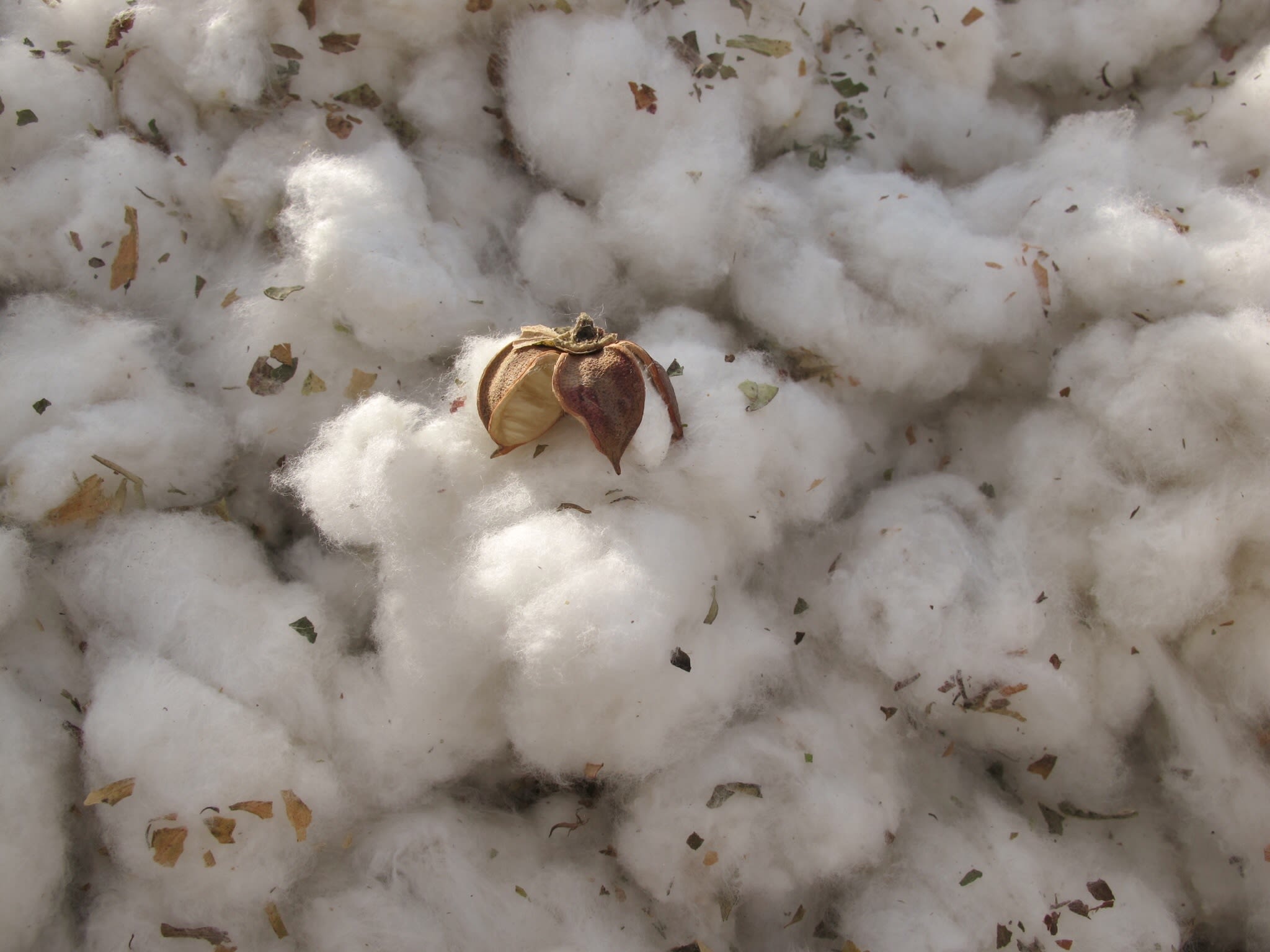
The infographics below dive into the 2018-19 Farmer Results for China, India, Mali, Pakistan, Tajikistan and Turkey. The results show social, environmental and economic outcomes. Each infographic is accompanied by a detailed summary of the results, highlighting particular successes and challenges faced by BCI Farmers in the cotton season.
You will also find a summary of the 2018-19 cotton season for additional BCI programme countries, as well as benchmarked standard countries. We are unable to publish Results Indicator data for these countries and we have outlined the reasons why below.
CHINA
HIGHLIGHTS AND CHALLENGES
Highlights
- Better Cotton production in China accounted for 15% of national production, with BCI Farmers producing 896,000 tonnes of Better Cotton in the 2018-19 cotton season.
- BCI Farmers experienced 25% higher profits than Comparison Farmers, while using 18% less fertiliser, 14% less chemical pesticide and 10% less water.
- BCI Farmers applied organic fertiliser 10% more often than Comparison Farmers.
Challenges
- Some BCI Farmers experienced challenging growing conditions including heavy rains (in the Yellow River Delta), which prompted re-sowing and led to lower yields.
- Issues emerged in the Xinjiang Uyghur Autonomous Region related to decent work and forced labour, which later culminated in BCI’s decision to suspend its licensing operations in that region the following season.
FARMER RESULTS OVERVIEW
81,043 BCI Farmers in China produced 896,000 tonnes of Better Cotton in the 2018-19 cotton season, making China the third largest Better Cotton producing country worldwide, after Brazil and Pakistan. In relation to Comparison Farmers, BCI Farmers reported 8% higher yields in 2018-19, despite BCI Farmers in the Yellow River Delta experiencing heavy rains at the beginning of the season, prompting re-sowing, shorter growing times and reduced yields.
Farmers achieved higher yields, on average, while using significantly less synthetic fertiliser, pesticides and water for irrigation (18%, 14% and 10% less than Comparison Farmers, respectively). BCI Farmers’ comparatively lower use of inputs and higher yields also contributed to 25% higher profits. In 2018-19, Better Cotton production in China accounted for 15% of national production.
Managing pests - BCI Farmers used accessible, cost-effective techniques to reduce their use of chemical pesticides. Farmers learnt to monitor pests and only spray pesticides when necessary (when the number of pests reached a certain threshold), and to make use of beneficial insects that prey on cotton pests. Fortunately, pest pressure was also less severe than the previous season.
Soil health - To nourish the health of the soil, BCI Farmers continued to test their soils for moisture and nutrient levels and apply biological fertilisers. In 2018-19, 10% more BCI Farmers applied organic fertiliser (such as compost, including recycled cotton stalks) than Comparison Farmers.
Water efficiency - BCI Farmers learnt to level their fields ahead of irrigating, enabling the water to flow over the soil in a uniform way, distributing water equally to their cotton plants. In addition, some Implementing Partners upgraded old pump irrigation systems, adopted or renovated drip irrigation equipment, and constructed ditches to further promote water use efficiency.
“CottonConnect’s agricultural experts advised us on when to replant our rain-soaked fields and on the measures we could take to avoid plant disease and promote healthy growth, in the face of intense rainfall. We were active in implementing their advice, and this has helped us to avoid crop losses.”
Western China - Issues emerged in the Xinjiang Uyghur Autonomous Region (XUAR) related to decent work and forced labour, which later culminated in BCI’s decision to suspend its licensing operations in that region the following season. As of October 2020, BCI has ceased all field-level activities in the XUAR, including capacity building, and farm data monitoring and reporting.
Data Collection
Total BCI Farmers: 81,043
BCI Farmers in the sample group: 6,587
Comparison Farmers: 1,934
India
FARMER RESULTS OVERVIEW
India has the largest number of farmers participating in the BCI programme and growing Better Cotton. In India, some 684,274 BCI Farmers produced 652,000 tonnes of Better Cotton in the 2018-19 cotton season, a considerable increase in both farmer numbers and cotton volumes, compared to the previous season.
BCI Farmers achieved 22% higher profits than Comparison Farmers, on average, by optimising their use of synthetic fertiliser and chemical pesticide. In addition, they used 13% less irrigation water than Comparison Farmers. In 2018-19, Better Cotton production in India accounted for 12% of national production.
While pink bollworm infestations decreased by 70% in 2018-19 compared to the previous season, pressure from other common pests remained similar to previous years, with increased pesticide resistance in some regions.
Managing pests - As part of their ongoing efforts to help BCI Farmers manage pesticide use effectively and prevent crop damage, our Implementing Partners conducted awareness-raising campaigns (in multiple states) on pink bollworm and white fly, amongst other cotton pests, and promoted practices designed to prevent further infestations. This tailored training, along with the implementation of more sustainable farming practices, helped BCI Farmers to achieve on average 11% higher yields than Comparison Farmers.
Phasing out a toxic insecticide - BCI Farmers continued to replace conventional chemicals with more sustainable alternatives. A major challenge in this respect was the phase-out of Monocrotophos, a Highly Hazardous Pesticide that is prohibited under the Better Cotton Standard. This chemical is widely available in India and heavily promoted by pesticide dealers. To help BCI Farmers phase out and ultimately eliminate their use of Monocrotophos, we created a robust action plan comprising country-wide training and consulted technical experts on more sustainable, cost-effective alternatives. Importantly, our partners’ Field Facilitators train farmers on integrated pest management and less toxic alternatives. Overall, as part of BCI’s efforts to promote more sustainable alternatives to conventional pesticides, BCI Farmers applied biopesticides (derived from natural materials) more often than Comparison Farmers.
Child labour - The risk of child labour remains in India, particularly in underprivileged rural communities and among the families of migrant workers. Some 51% of BCI Farmers in India demonstrated a basic or low level of awareness of child labour issues and training on this topic remains a key focus going forward. Through the cotton season, our Implementing Partners worked with farming communities’ schools to help understand why children were absent and supported local authorities in raising school enrolment and retention rates by promoting the value of children’s education. For example, BCI’s partner Welspun Foundation delivered child labour awareness activities for children aged between 8 and 14 years old, using videos, games and fun activities. More than 2,400 children from 21 villages took part in the sessions.
Women’s empowerment - We face cultural challenges in training more women in the cotton fields, with women farmers and workers representing just 20% of training participants in 2018-19. In India, many women are denied permission, by their husbands or families, to attend training sessions, or they can only attend in between domestic tasks. We continue to work with our Implementing Partners to build their capacity to provide high quality training to both men and women at times which are convenient for them.
Data Collection
Total BCI Farmers: 684,274
BCI Farmers in the sample group: 60,223
Comparison Farmers: 16,764
HIGHLIGHTS AND CHALLENGES
Highlights
- BCI Farmers achieved 11% higher yields and 22% higher profits than Comparison Farmers in the 2018-19 cotton season.
- 684,274 BCI Farmers produced 652,000 tonnes of Better Cotton.
- Farmers focused specifically on phasing out Highly Hazardous Pesticides and managing cotton pests using non-chemical or less toxic methods.
Challenges
- Pest pressure remained constant, except from pink bollworm. BCI Farmers faced a significant challenge in phasing out the use of Monocrotophos, a Highly Hazardous Pesticide that is prohibited under the Better Cotton Standard.
- Women farmers and farm workers represented just 20% of training participants in the 2018-19 cotton season.
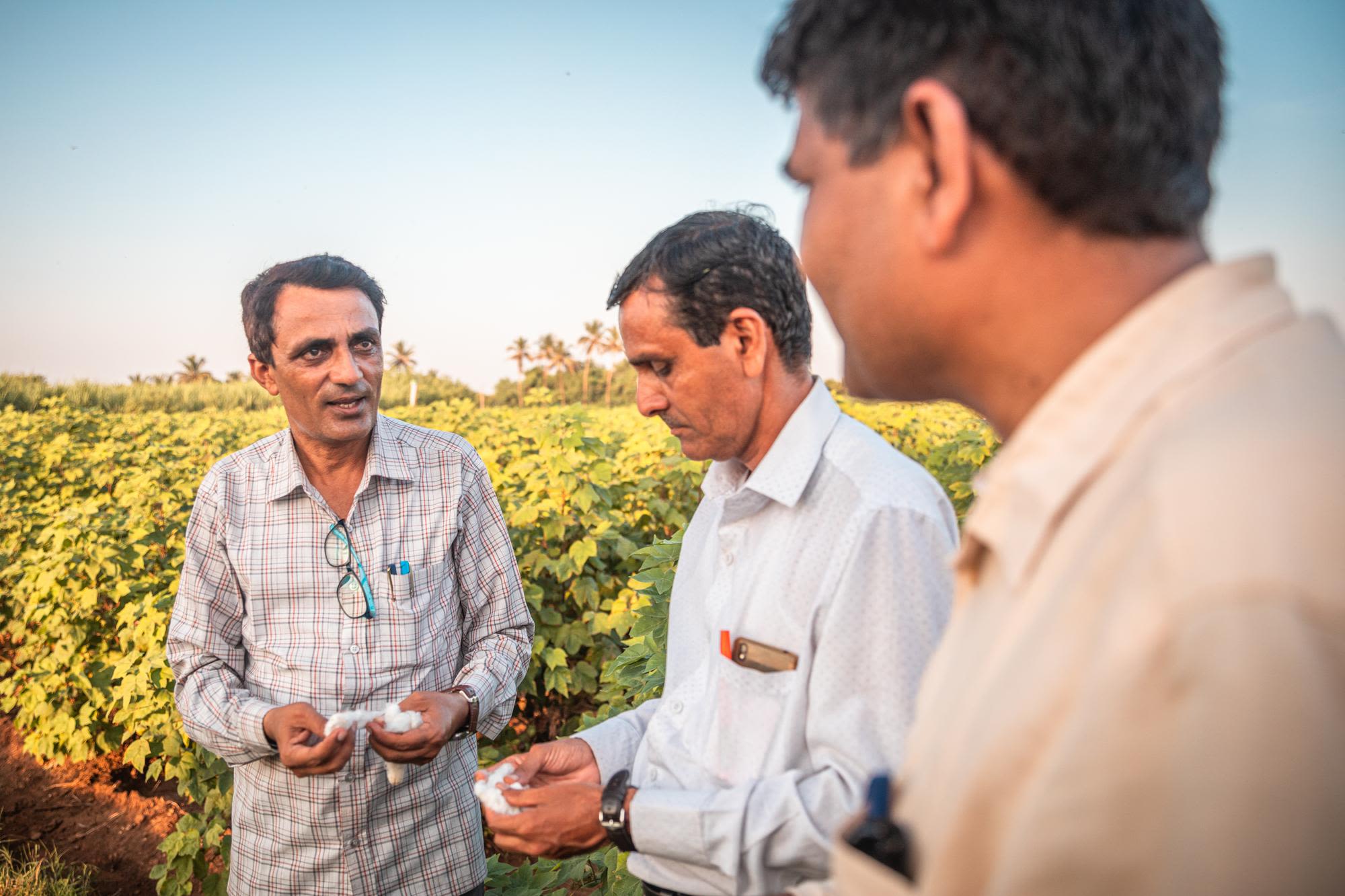
© BCI/Vibhor Yadav. Left to right: BCI Farmer Balubhai Parmar, Jitesh Joshi and Kiritbhai Jasani. Kodinar, Gujarat, India. 2019.
© BCI/Vibhor Yadav. Left to right: BCI Farmer Balubhai Parmar, Jitesh Joshi and Kiritbhai Jasani. Kodinar, Gujarat, India. 2019.
“A group of us BCI Farmers in Kanakya village set up a committee to help other farmers in our community use pesticides and fertilisers more efficiently. We wanted to promote plant-based natural alternatives, but they weren’t readily available locally, so we had to find a way to make it easier for farmers to gain access to these products at reasonable prices. And we also had to convince them to change their ways by showing them the results in the field.”
MALI
HIGHLIGHTS AND CHALLENGES
Highlights
- Better Cotton production in Mali expanded more than ten-fold in the 2018-19 cotton season to 65,000 tonnes, up from 6,000 tonnes in the 2017-18 cotton season.
- 54,326 BCI Farmers became licensed to grow Better Cotton (up from 3,879) by improving the way they recorded their progress.
- BCI Farmers reported 14% higher profits than Comparison Farmers, while using 31% less pesticide.
Challenges
- Extreme weather in the form of late or erratic rainfall remains highly problematic in a country where the cotton crop is rainfed. Many farmers had to re-sow their seeds several times for their seedlings to become established.
- It was not possible to include the 2018-19 Farmer Results on awareness of child labour issues, as the data on this indicator was not accurate enough to assess the situation robustly.
FARMER RESULTS OVERVIEW
Better Cotton production in Mali expanded significantly in the 2018-19 cotton season, growing more than ten-fold to 65,000 tonnes, up from 6,000 tonnes in the 2017-18 cotton season, despite climate and soil fertility challenges. The large increase was due to all 14 of the country’s Producer Units (a grouping of smallholder BCI Farmers) gaining a BCI licence, compared to just one Producer Unit in the previous season. Some 54,326 BCI Farmers became licensed to grow Better Cotton (up from 3,879), as a direct result of improving the way they recorded their progress. In 2018-19, Better Cotton production in Mali accounted for 24% of national production.
Overall, BCI Farmers reported 4% higher yields and 14% higher profits than Comparison Farmers in 2018-19, while using 31% less pesticide. In particular, BCI Farmers adopted a precise approach to using pesticides, reducing their applications from the typical six sprays per season in conventional farming to three, two or zero sprays in some cases. Their comparative success in achieving higher profits may be partly due to obtaining better prices for better quality cotton, as a result of adopting improved harvesting techniques to preserve the quality of their crop. These included picking cotton as soon as it’s ready, storing harvested cotton in warehouses (rather than on the ground), and replacing plastic bags with baskets made of locally sourced materials.
Water efficiency - To preserve water in a country where the cotton crop is primarily rainfed (rather than irrigated), BCI Farmers learnt to manage soil moisture carefully, helping to ensure that newly sown seeds had access to as much water as possible in the event of late or erratic rains. However, despite their best efforts, many farmers had to re-sow their seeds several times for their seedlings to become established. Subsequent rainfall was sufficient for healthy plant growth.
Child labour - Raising BCI Farmers’ awareness of the importance of identifying, preventing and addressing child labour remains a challenge. It’s important to note that we haven’t been able to include the 2018-19 results on farmer awareness about child labour issues, as the data provided by the partner on this topic is not yet accurate enough to assess the situation robustly. Our Implementing Partner will step up its efforts to address this issue in 2019-20 through increased training, including on how best to capture and record progress.
Women’s empowerment - In 2018-19, 39% of the farmers and farm workers who received training in Mali were women. This proportion has risen due to the efforts of on-the-ground experts, including Tata Coulibaly, the long-serving Head of Training with our Implementing Partner, the Compagnie Malienne pour le Développement des Textiles (CDMT). Tata has dedicated her career to supporting rural women, firstly through raising awareness of issues connected to maternal and infant health, and then increasingly focusing on economic empowerment.
“Through BCI, we have supported women farmers in multiple ways – from more efficient harvesting techniques to raising their awareness of the importance of equal pay through special role play sketches for radio and television. We have also trained more than 2,000 women in leadership, which has given rise to the emergence of women leaders capable of promoting the interests of women in the cotton sector.”
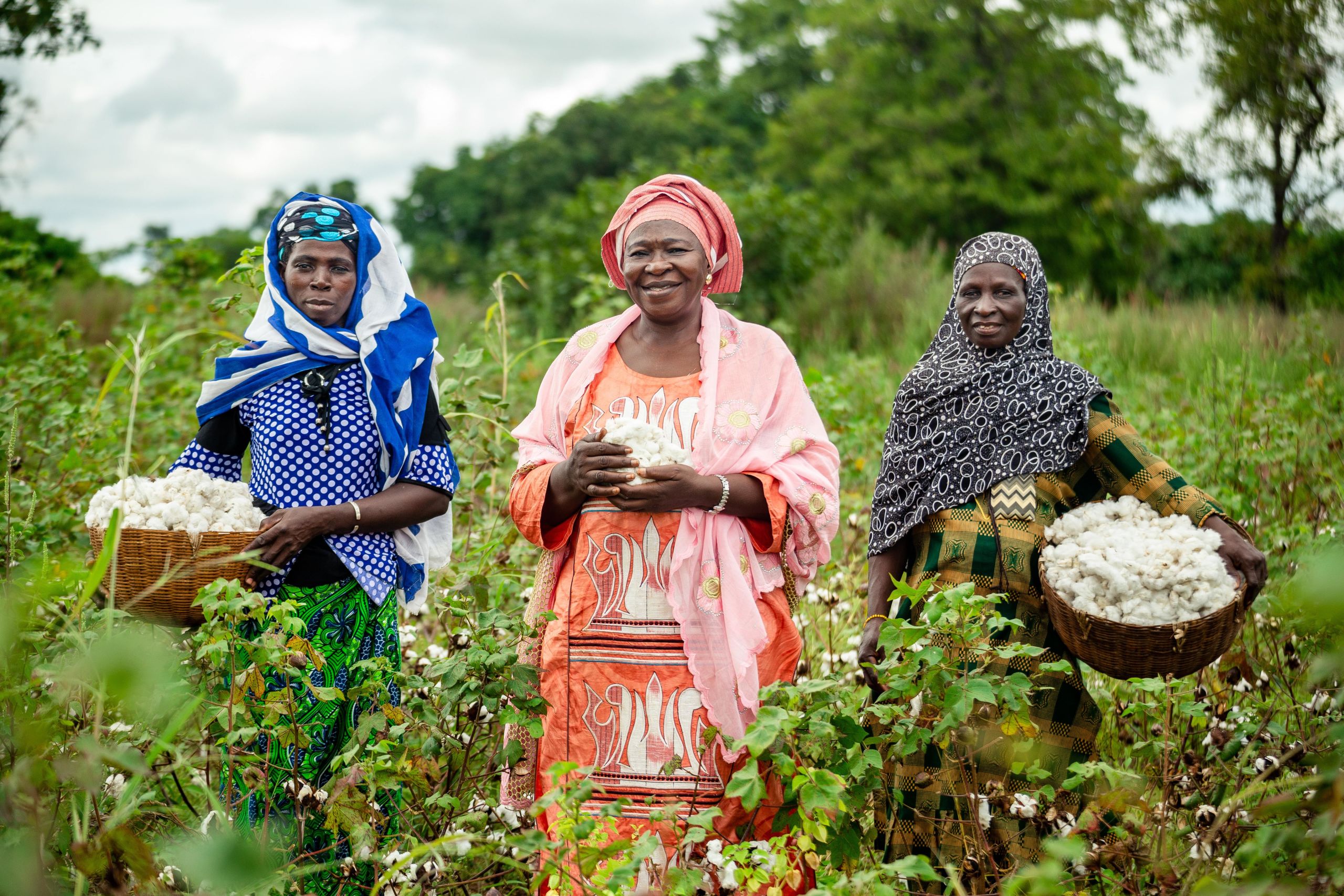
© BCI/Seun Adatsi. Tata Djire (centre) with BCI Farmers/women leaders in the community. Kolondieba, Mali. 2019.
© BCI/Seun Adatsi. Tata Djire (centre) with BCI Farmers/women leaders in the community. Kolondieba, Mali. 2019.
Learn more about Tata’s story.
Data Collection
Total BCI Farmers: 54,326
BCI Farmers in the sample group: 1,791
Comparison Farmers: 443
PAKISTAN
FARMER RESULTS OVERVIEW
In Pakistan, the majority of cotton is grown in two regions – Punjab and Sindh. BCI Farmers produced 906,000 tonnes of Better Cotton in the 2018-19 cotton season, up from 701,000 tonnes in the previous season, which made Pakistan the second largest producer of Better Cotton, after Brazil. BCI Farmer numbers increased by nearly 50% from 251,292 to 369,264, as the BCI programme continued to expand within existing cotton producing areas.
On average, BCI Farmers reported 38% higher profits than Comparison Farmers by achieving 11% higher yields and saving costs by using significantly fewer pesticides and synthetic fertilisers (18% and 15% less, respectively). Favourable cotton prices in 2018-19 also contributed to better economic conditions for cotton farmers overall in Pakistan. In 2018-19, Better Cotton production in Pakistan accounted for 54% of national production.
Soil health - BCI Farmers learnt to apply fertilisers to meet the nutritional needs of the soil and substituted conventional chemicals with organic fertilisers, where possible. They took additional, low-cost measures to optimise soil health, including manual hoeing and weeding to remove weeds that could compete with their cotton for water. These efforts, together with government subsidies for smallholder farmers (which may have benefitted BCI Farmers), proved particularly useful in a season when the cost of agrochemicals increased.
Child labour - The risk of child labour remains in Pakistan, particularly in underprivileged rural communities and among the families of migrant workers. In 2018-19, 48% of farmers and workers had a basic or low level of awareness of child labour issues. Delivering more training on this topic will be a major focus in future seasons. However, with our Implementing Partners’ support, some BCI Farmers are already recognising the value of children’s education. For example, after taking part in BCI’s decent work training, one farmer in Muzaffargarh (Punjab), sent his 12-year-old son back to school, where he is now flourishing. His father’s decision is inspiring other members of the community. Find out more.
Women’s empowerment - Some 84% of farm workers trained during the 2018-19 season were women. However, women represented just 0.1% of farmers trained. This could be due to the way we record and count BCI Farmers. In Pakistan, for example, it is often the male head of the family who is registered as the BCI Farmer. We aim to evolve the way we record farmers and who attends training sessions, in order to provide a more representative picture – find out more here. BCI Implementing Partner WWF-Pakistan is also supporting some 7,000 women in Punjab’s cotton-growing Rahim Yar Khan District in establishing their own tree nurseries. The women learn to cultivate native trees from seed and sell them back to WWF at market price, while keeping some to improve biodiversity on their families’ cotton farms. Learn more.
Data Collection
Total BCI Farmers: 369,264
BCI Farmers in the sample group: 41,030
Comparison Farmers: 10,900
HIGHLIGHTS AND CHALLENGES
Highlights
- BCI Farmers produced 906,000 tonnes of Better Cotton in the 2018-19 cotton season, up from 701,000 tonnes in the previous season.
- Pakistan was the second largest producer of Better Cotton, after Brazil.
- BCI Farmers reported 38% higher profits than Comparison Farmers and achieved 11% higher yields.
Challenges
- The risk of child labour remains in Pakistan, particularly in underprivileged rural communities and among the families of migrant workers.
- Due to entrenched cultural norms, and the way BCI currently records and counts BCI Farmers, women represented just 0.1% of BCI Farmers trained.
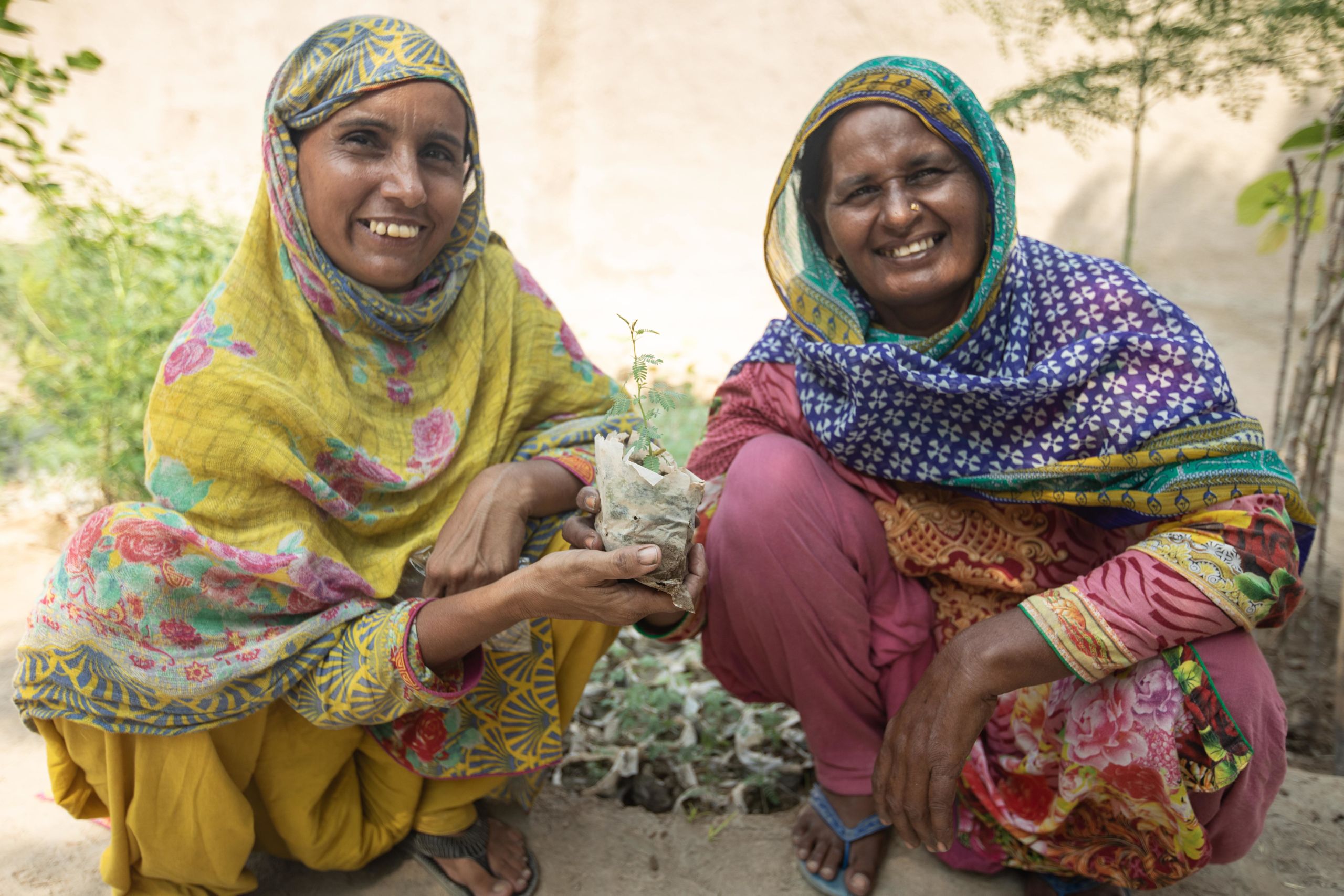
© BCI / Khaula Jamil. Farm-worker Ruksana Kausar (right) and her sister in law, Abida. Rahim Yar Khan, Punjab, Pakistan, 2019.
© BCI / Khaula Jamil. Farm-worker Ruksana Kausar (right) and her sister in law, Abida. Rahim Yar Khan, Punjab, Pakistan, 2019.
“I decide exactly how my additional income is spent. And I feel proud of my decision to participate in this project and work independently, running my own business and making all the decisions. I enjoy what I’m doing and feel happy that I’m contributing to keeping the environment healthy. Above all, I have gained respect in my family and community.”
TAJIKISTAN
HIGHLIGHTS AND CHALLENGES
Highlights
- BCI Farmers used 38% less pesticide than Comparison Farmers in the 2018-19 cotton season.
- To help BCI Farmers address water challenges and make the most of the water available, our Implementing Partner Sarob partners with Helvetas and the Alliance for Water Stewardship to implement the WAPRO framework in Tajikistan.
- In the 2018-19 cotton season, BCI Farmers focused on improving their pest management techniques, incorporating more bio-control methods and reducing water usage.
Challenges
- With increasingly arid and challenging farming conditions, including unpredictable rains, higher than usual temperatures and increased input costs, participating and licensed BCI Farmer numbers dropped to 964 in 2018-19.
- Water scarcity remains a pressing challenge, as climate change intensifies pressure on the country’s water supplies.
- BCI Farmers also faced increasing pest pressure from bollworm, aphids and spider mites.
Farmer Results Overview
In the 2018-19 cotton season, Better Cotton production in Tajikistan accounted for 12% of national production. On average, BCI Farmers reported 5% higher yields than Comparison Farmers. This may be partly due to Implementing Partner Sarob helping a number of BCI Farmers to access high quality seeds from Turkey. However, amid increasingly arid and challenging farming conditions, including unpredictable rains, higher than usual temperatures and increased input costs, participating and licensed BCI Farmer numbers fell from 1,261 in the 2017-18 cotton season to 964 in 2018-19. The total volume of Better Cotton produced in the northern Sughd and southern Khatlon regions declined from 18,000 tonnes to 12,000 tonnes.
Managing pests - To address increasing pest pressure from bollworm, aphids and spider mites in particular, BCI Farmers learnt to adopt pest monitoring techniques, only spray when necessary and opt for bio-control methods (such as beneficial insects) and pheromone and light traps to control pests, which led to BCI Farmers using 38% fewer pesticides than Comparison Farmers. This is also helping BCI Farmers to make cost savings at a time when the cost of pesticides is rising.
Around 8% more BCI Farmers used biological pest control methods than Comparison Farmers. However, BCI Farmers’ use of synthetic fertiliser was 3% higher than Comparison Farmers due to farmers using fertilisers such as phosphorus and potassium (which Comparisons Farmers did not use), based on soil analysis and agronomists’ recommendations. This percentage is not significant enough to demonstrate a clear difference, but improvements among BCI Farmers are likely due to their use of products that were better suited to their soil’s needs.
Water stewardship - Water scarcity challenges persisted in 2018-19, with climate change putting further pressure on the country’s water supplies. To help BCI Farmers address this issue and make the most of the water available, Sarob partners with Helvetas and the Alliance for Water Stewardship to implement the WAPRO framework in Tajikistan. WAPRO is an initiative designed to improve water efficiency and productivity in agriculture. In this way, BCI Farmers learn affordable techniques that are suitable to their farms, an approach which is seeing positive results as BCI Farmers used 6% less water than Comparison Farmers.
In addition to digging alternative furrows (or small trenches) to capture and hold more water in the field, some farmers, such as Sharipov Habibullo, have invested in tubular irrigation to help direct water to their plants more precisely. This enabled him to save 1.8 million litres of water (per hectare of cotton) in the 2018-19 cotton season, or roughly two-thirds of an Olympic swimming pool. Read Sharipov’s story.
“I have learnt about best practice water-efficient techniques and technologies. I’ve also updated and refreshed my knowledge on promoting soil health and managing cotton pests effectively using natural methods such as light traps, both of which have an impact on how much water my soil needs. I am now keen to share my learnings with other BCI Farmers.”
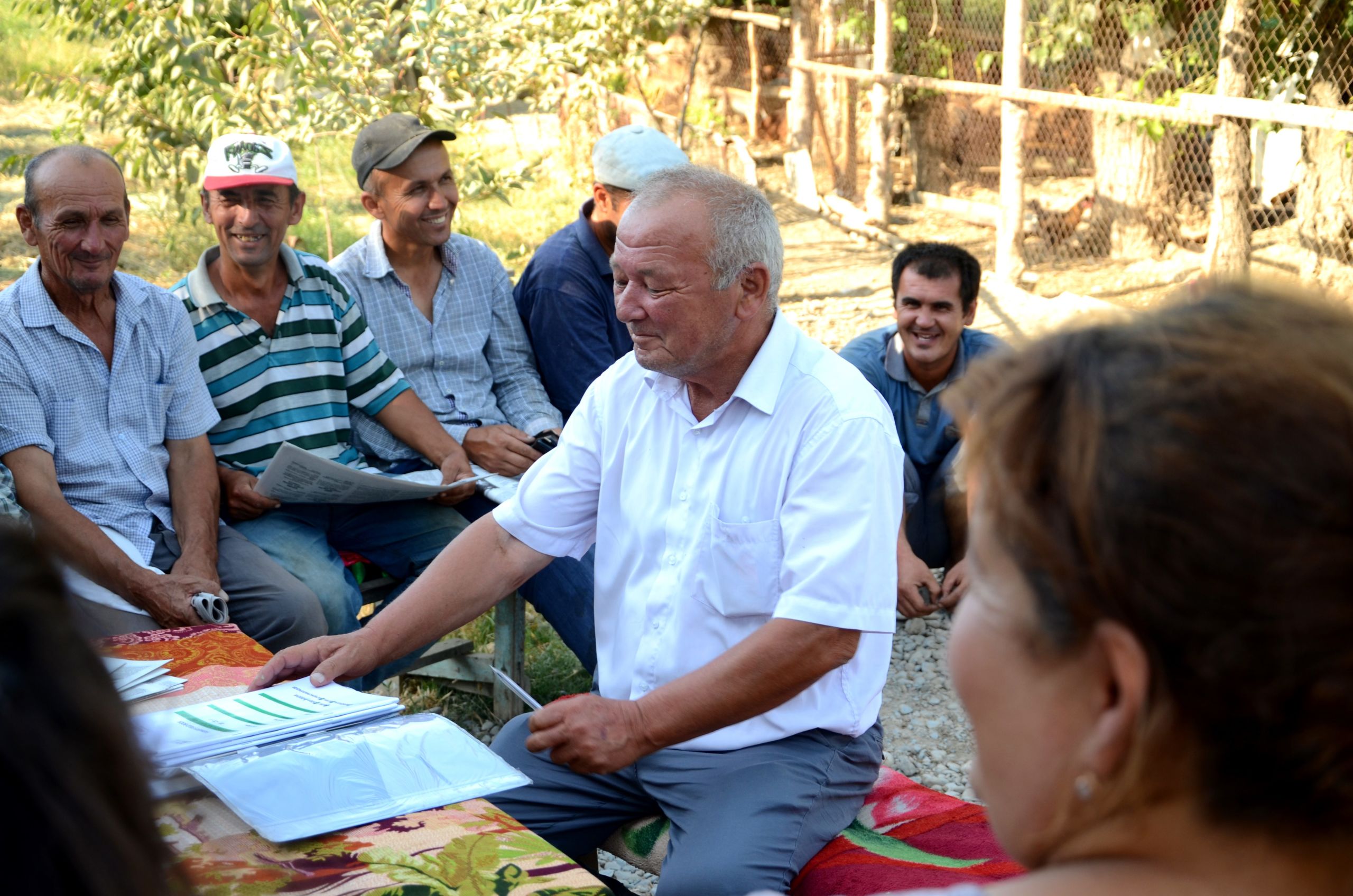
© BCI / Emma Upton. BCI Farmer Sharipov Habibullo leads a training session with neighbouring farmers. Khujand, Tajikistan. 2019.
© BCI / Emma Upton. BCI Farmer Sharipov Habibullo leads a training session with neighbouring farmers. Khujand, Tajikistan. 2019.
Data Collection
Total BCI Farmers: 964
BCI Farmers in the sample group: 565
Comparison Farmers: 296
TURKEY
FARMER RESULTS OVERVIEW
In the 2018-19 cotton season, 962 BCI Farmers produced 53,000 tonnes of Better Cotton, up from 41,000 tonnes produced by 791 BCI Farmers in the previous season. BCI Farmers moved swiftly to address the challenges of irregular rains during sowing and harvesting as well as an aphid epidemic, achieving 6% higher yields than Comparison Farmers. In 2018-19, Better Cotton production in Turkey accounted for 5% of national production.
Pesticide resistance among pests such as aphids caused challenges for all cotton farmers, including BCI Farmers, making conventional approaches to managing pests less effective. The added pressure of erratic or extreme weather created the conditions for pests to thrive, as well as washing away carefully planted seeds and damaging yields later in the season.
Managing pests - To help address the challenges of pests and aphids in particular, our new Implementing Partner WWF-Turkey – one of a number of our WWF partners, which include WWF International and its affiliates around the world – provided more Field Facilitators (experts who help farmers on the ground) in Aydın. This helped in delivering more effective training on managing pests as Field Facilitators were able to deliver independent advice on precision approaches to pesticides and using beneficial insects.
Soil health - WWF-Turkey helped BCI Farmers to use soil testing as a means to make the best decisions on the timing and volumes of fertiliser applications. In addition, BCI Farmers used machinery whenever possible to boost fibre quality, including for preparing the land, sowing, taking care of the soil and harvesting their crops.
Labour conditions - In Turkey, some workers who help with the cotton production are seasonal or migrant workers. These workers face challenges including a lack of employment contracts and they can be vulnerable to poor working conditions and low pay. BCI Farmers rely on additional workers in the season, and IPUD and partners have therefore taken action to help improve labour conditions for cotton workers on their farms.
In particular, BCI’s Strategic Partner IPUD partnered with the Fair Labor Association and seven global brands — all BCI Members, including household names such as adidas, IKEA and Nike— to raise working conditions in Şanlıurfa, where 40% of Turkey’s cotton is grown and workers are considered to be particularly at risk. Together, they set out to help improve workers’ lives, address social issues, protect their rights and achieve greater job security. Read more here.
“Becoming a trusted cotton farmer to the global apparel and textile industry means providing decent working conditions for workers and ensuring there are never under-age workers on my farm. Joining the project gave me an opportunity to further improve employment practices on my farm and protect vulnerable workers, which will also strengthen my reputation.”
Data Collection
Total BCI Farmers: 962
BCI Farmers in the sample group: 962
Comparison Farmers: 93
HIGHLIGHTS AND CHALLENGES
Highlights
- 962 BCI Farmers produced 53,000 tonnes of Better Cotton, up from 41,000 tonnes produced by 791 BCI Farmers in the previous season.
- BCI’s Strategic Partner IPUD completed a two-year partnership with the Fair Labor Association and seven global brands — all BCI Members — to improve working conditions in Şanlıurfa.
Challenges
- Pesticide resistance caused challenges for farmers, while the added pressure of erratic or extreme weather created conditions for pests to thrive, with an aphid epidemic occurring in the 2018-19 cotton season.
- Seasonal and migrant farm workers in particular faced challenges including a lack of employment contracts and increased vulnerability to poor working conditions and low pay.
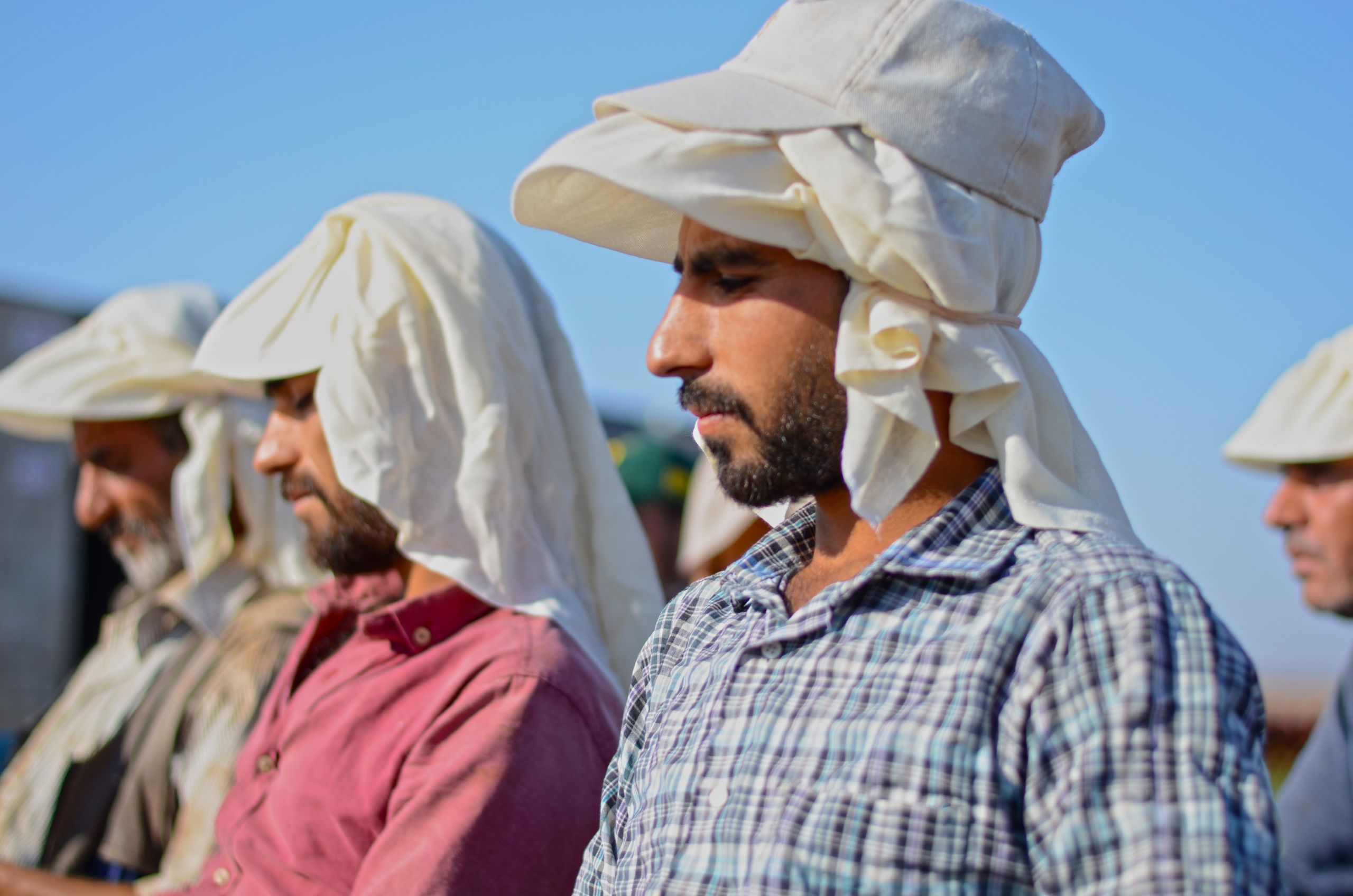
© BCI / Morgan Ferrar. Producer Unit Manager Murat Bucak delivering a health and safety training to farm-workers. Şanlıurfa, Turkey. 2019
© BCI / Morgan Ferrar. Producer Unit Manager Murat Bucak delivering a health and safety training to farm-workers. Şanlıurfa, Turkey. 2019
LEARN MORE ABOUT OTHER BCI PROGRAMME COUNTRIES
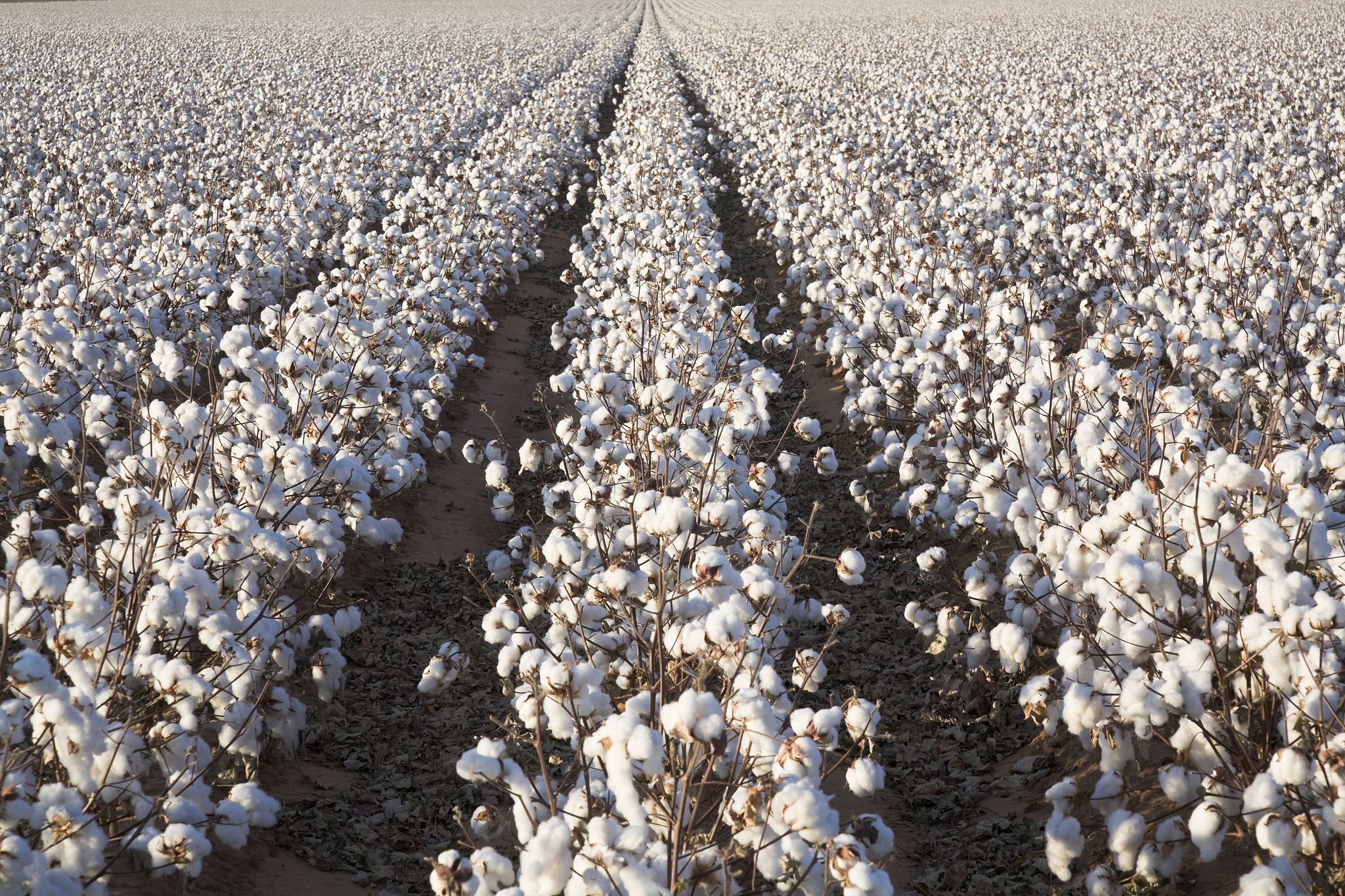
ISRAEL
HIGHLIGHTS AND CHALLENGES
Highlights
- BCI Farmers took action to limit crop damage and mitigate future outbreaks of charcoal rot (a soil-borne fungus), following an attack in 2017-18. In one farming community, these techniques led to an all-time high yield of 2,600 kilograms of lint (over 10 bales) per hectare.
- Our partner Israel Cotton Production and Marketing Board (ICB) began to develop the Israel Cotton Production Standard, which will be benchmarked against the Better Cotton Standard.
Challenges
- BCI Farmer numbers and yields declined to 58 BCI Farmers and 9,000 tonnes of Better Cotton (from 75 BCI Farmers and 12,000 tonnes of Better Cotton in 2017-18), as BCI Farmers continued to address the challenges brought by the charcoal rot outbreak.
- Pink bollworm pressure presented additional difficulties, following a particularly dry winter.
FARMER RESULTS OVERVIEW
All cotton production in Israel was licensed as Better Cotton in the 2018-19 cotton season. A total of 58 BCI Farmers produced 9,000 tonnes of Better Cotton in 2018-19. This reflected a decline in Better Cotton production and farmer enrolment compared to 2017-18 (12,000 tonnes produced by 75 participating farmers) which was largely due to a soil-borne fungus, called “charcoal rot” or macrophomina phaseolina taking hold the previous cotton season. Charcoal rot attacks cotton plant roots and tissue, particularly after extreme heat or drought and in Israel, it posed a real risk to cotton farmers’ crops and livelihoods, cutting yields and bringing economic uncertainty to farming communities.
Addressing the charcoal rot outbreak - BCI Farmers in Israel moved to address the challenge throughout the 2017-18 and 2018-19 seasons, working to identify fungal outbreaks and share best practices for preventing them. Our Implementing Partner in Israel, the Israel Cotton Production and Marketing Board (ICB), played a fundamental role in this effort by collecting and analysing field data and consulting with agronomy experts to provide timely, comprehensive and practical advice to farmers.
For example, ICB advised farmers on techniques to reduce plant stress, such as: irrigating according to the crop’s exact needs; applying pesticides and fertilisers sparingly and precisely as the crop emerged from the soil; and promoting better soil health with crop rotation. These and other techniques helped BCI Farmers limit crop damage and adopt measures to mitigate future outbreaks. In one farming community, these techniques led to an all-time high yield of 2,600 kilograms of lint (over 10 bales) per hectare. Learn more here.
“It was truly record-breaking. By doing everything possible to encourage the plants to flourish as they developed from seedlings – delivering the right amount of water, controlling pests and applying preventative fungicides – the plants remained healthy and reached a height of around 80cm at first bloom, which is considered high.”
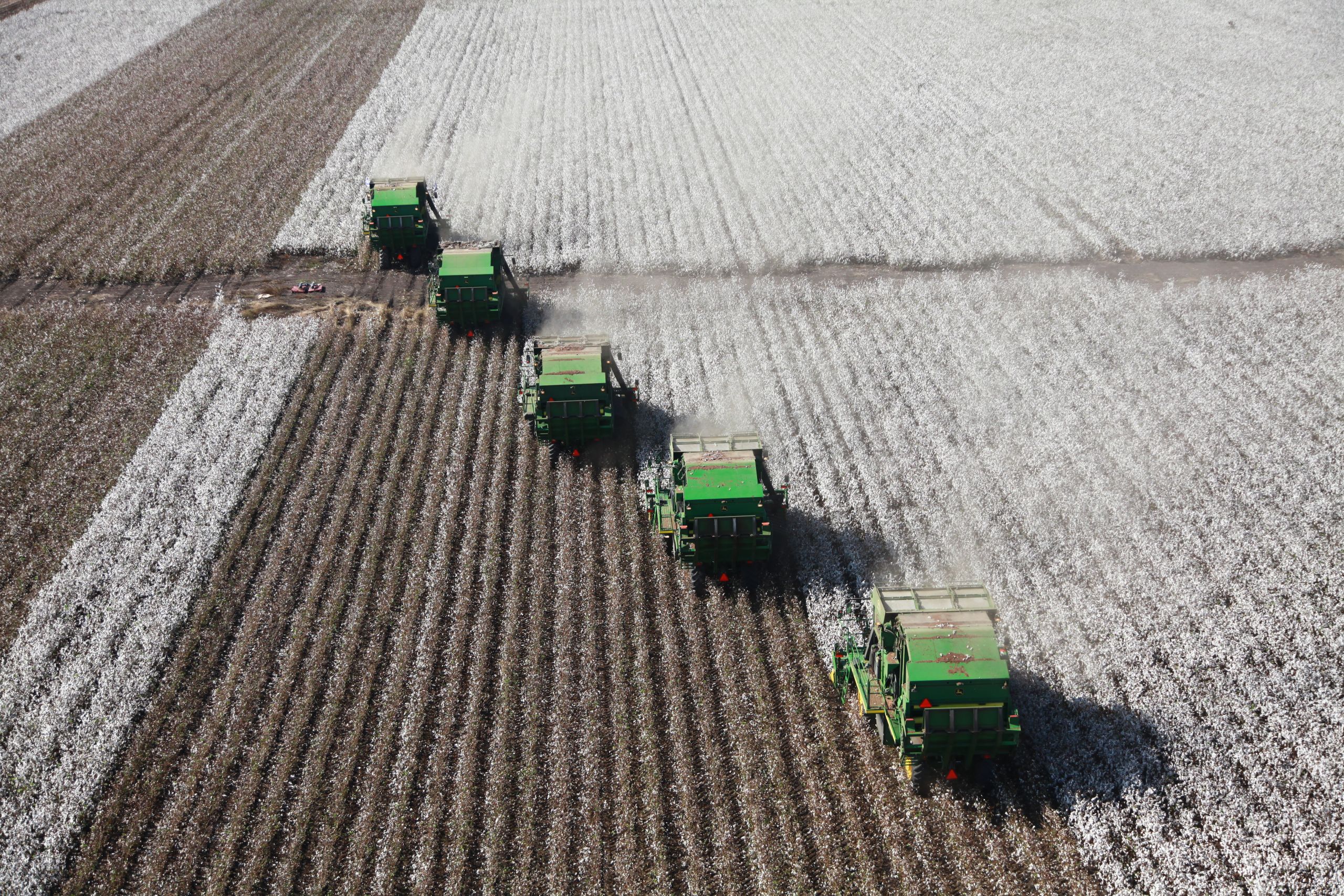
Pest management - In addition, BCI Farmers took action to address growing pink bollworm pressure in the 2018-19 cotton season, caused by a particularly dry winter. To control bollworm numbers, BCI Farmers used both pheromones and measured use of chemicals. Nevertheless, many fields were damaged by the pest, leading to decreased yields and cotton quality in some cases. Efforts to address the challenge are still ongoing.
New cotton standard - While overseeing the implementation of the Better Cotton Standard with BCI Farmers in Israel, ICB also began to develop the Israel Cotton Production Standard (ICPS). Adapted from the Better Cotton Standard, the ICPS will be tailored to the Israeli cotton production context. Upon its completion in 2020, the ICPS will be eligible to be benchmarked as a BCI-recognised standard system. Farmers who meet the ICPS requirements will then be able to market their cotton as Better Cotton.
In Israel, Comparison Farmer data was not available because all of the cotton farmers in the country are already participating in the BCI programme.
KAZAKHSTAN
HIGHLIGHTS AND CHALLENGES
Highlights
- BCI Farmer numbers in Kazakhstan nearly doubled from 169 to 334, year on year, and produced twice the volume of cotton (2,000 tonnes in 2018-19 compared to 1,000 tonnes in 2017-18).
- Our Implementing Partner helped BCI Farmers to make significant improvements in pest management through field monitoring and a precision approach to using bio-control agents.
Challenges
- Poor soil health, water availability and cotton pest attacks continued to present challenging growing conditions.
- In some instances, more sustainable fertilisers are costly, which can be a barrier for modest farming families changing their practices.
FARMER RESULTS OVERVIEW
Despite the key challenges of poor soil health (resulting from the historically heavy use of synthetic fertilisers), water availability and cotton pest attacks, BCI Farmer numbers in Kazakhstan nearly doubled from 169 to 334, year on year. In the 2018-2019 cotton season, BCI Farmers achieved a good yield, producing 2,000 tonnes of Better Cotton, up from 1,000 in the 2017-18 cotton season. Better Cotton production in Kazakhstan accounted for 3% of national production.
Pest management - Our Implementing Partner helped BCI Farmers to make significant improvements in pest management through field monitoring and a precision approach to fight pests using bio-control agents. These are defined by BCI as parasites, predators or pathogens used to control pests; the agents may either occur naturally in the field or be developed by a laboratory.
Soil health - Similarly, our Implementing Partner raised awareness of techniques to improve soil health such as field levelling, and promoted soil analysis to guide BCI Farmers’ use of fertilisers and promoting biological alternatives. However, this is a gradual change, as the more sustainable fertilisers are costly, which can be a barrier for modest farming families. Despite this, BCI Farmers are seeing increases in yield through improved soil health, and these results will ultimately present the proof required from them and their fellow farmers to make further changes.
In Kazakhstan, there was only one licensed Producer Unit (a grouping of BCI Farmers) and BCI’s data confidentiality agreements prevent public reporting of a single Producer Unit’s results. Therefore, we do not report Results Indicator data for Kazakhstan.
MADAGASCAR
HIGHLIGHTS AND CHALLENGES
Highlights
- A smaller number of licensed BCI Farmers (compared to 2017-18) collectively produced higher yields than in the previous season, growing 700 tonnes of Better Cotton (compared to 500 tonnes).
- Our Implementing Partner Tianli Agri worked to encouraging more farmers to use organic and mineral fertilisers.
- Tianli Agri worked with women's associations and partnered with local schools to promote the importance of children’s education.
Challenges
- BCI Farmer numbers dropped from 2,193 in the 2017-18 cotton season to 663 in the 2018-19 season, as climate pressure continued to create unfavourable cotton growing conditions.
- Pest pressure and poor soil health also presented challenges for BCI Farmers.
- The risk of child labour remains a concern in some areas.
FARMER RESULTS OVERVIEW
Increased climate pressures and a lack of organisation and support within the country’s cotton sector is deterring many farmers from growing cotton. BCI Farmer numbers dropped considerably from the 2017-18 cotton season (2,193) to the 2018-19 season (663), with some farmers opting to grow other crops. While we help farmers who choose to grow cotton to do so in a more sustainable manner, we understand that sometimes the better choice for farmers is to grow another crop.
However, this smaller number of licensed BCI Farmers collectively produced higher yields in 2018-19 compared to the previous season, growing 700 tonnes of Better Cotton (compared to 500 tonnes). This was partially due to improved conditions in the semi-arid Atsimo Andrefana region, where sufficient rainfall (in a country dependent on rainfall for its crops) enabled a slight increase on the previous season’s yields. Better Cotton production in Madagascar accounted for 10% of national production.
Pest management and soil health - BCI Farmers also faced challenges in the form of pest pressure and poor soil health, with our Implementing Partner Tianli Agri working to encouraging more farmers to use organic and mineral fertilisers.
Child labour - To help raise awareness of the importance of preventing child labour, our Implementing Partner worked with women's associations to promote education and partnered with schools in the region. It has also begun working with the Ministry of Population and Promotion of Women, Child Protection and Social Action, with a view to gaining more support to seek collective solutions to the challenges of expanding access to education and health services, as well as safe water.
In Madagascar, there was only one licensed Producer Unit (a grouping of BCI Farmers) and BCI’s data confidentiality agreements prevent public reporting of a single Producer Unit’s results.
MOZAMBIQUE
HIGHLIGHTS AND CHALLENGES
Highlights
- Our Implementing Partners in Mozambique have partnered with local education authorities and schools in cotton-growing regions to help prevent child labour and promote the value of children’s education.
- To help include more women in Mozambique’s cotton farming, BCI commissioned a consultant to explore the issues that matter most to women cotton farmers and workers.
Challenges
- Better Cotton yields declined slightly in the 2018-19 cotton season, year on year, as a result of extreme weather and natural disasters – notably cyclones Idai and Kent – with 97,936 BCI Farmers producing 10,000 tonnes of Better Cotton.
FARMER RESULTS OVERVIEW
Better Cotton yields were slightly lower than expected in the 2018-19 cotton season as a result of extreme weather and natural disasters, with 97,936 BCI Farmers – representing 86% of the country’s cotton farmers – producing 10,000 tonnes of Better Cotton.* In particular, the country was hit by two major cyclones, Idai and Kent, which caused significant destruction to the country’s infrastructure, loss of human life and damage to farms and crops, disrupting growing seasons and diminishing yields. Overall, Better Cotton production in Mozambique accounted for 36% of national production.
Child labour - Our Implementing Partners in Mozambique have developed joint programmes with local education authorities and schools in cotton-growing regions to help prevent child labour and promote the value of children’s education. This is particularly important in a country where child labour affects more than one million children, and cotton farmers often rely on their whole families, including children, to help out during the cotton season. Producer Unit Managers regularly visit schools and communities to talk to children and parents about decent work, with a focus on children’s rights, and raising yields without involving children in heavy or hazardous tasks.
In the case of family smallholdings, children may help out on their family’s farm provided that the work is not liable to damage their health, safety, wellbeing or development, and the activities must not interfere with their education. Learn more in the Better Cotton Principles and Criteria.
“Within our community, we’ve also realised that farm work can be dangerous for children. If they accompany us to our cotton field, it’s important that we make sure they don’t touch farming equipment, which is often sharp, or go near pesticide containers.”
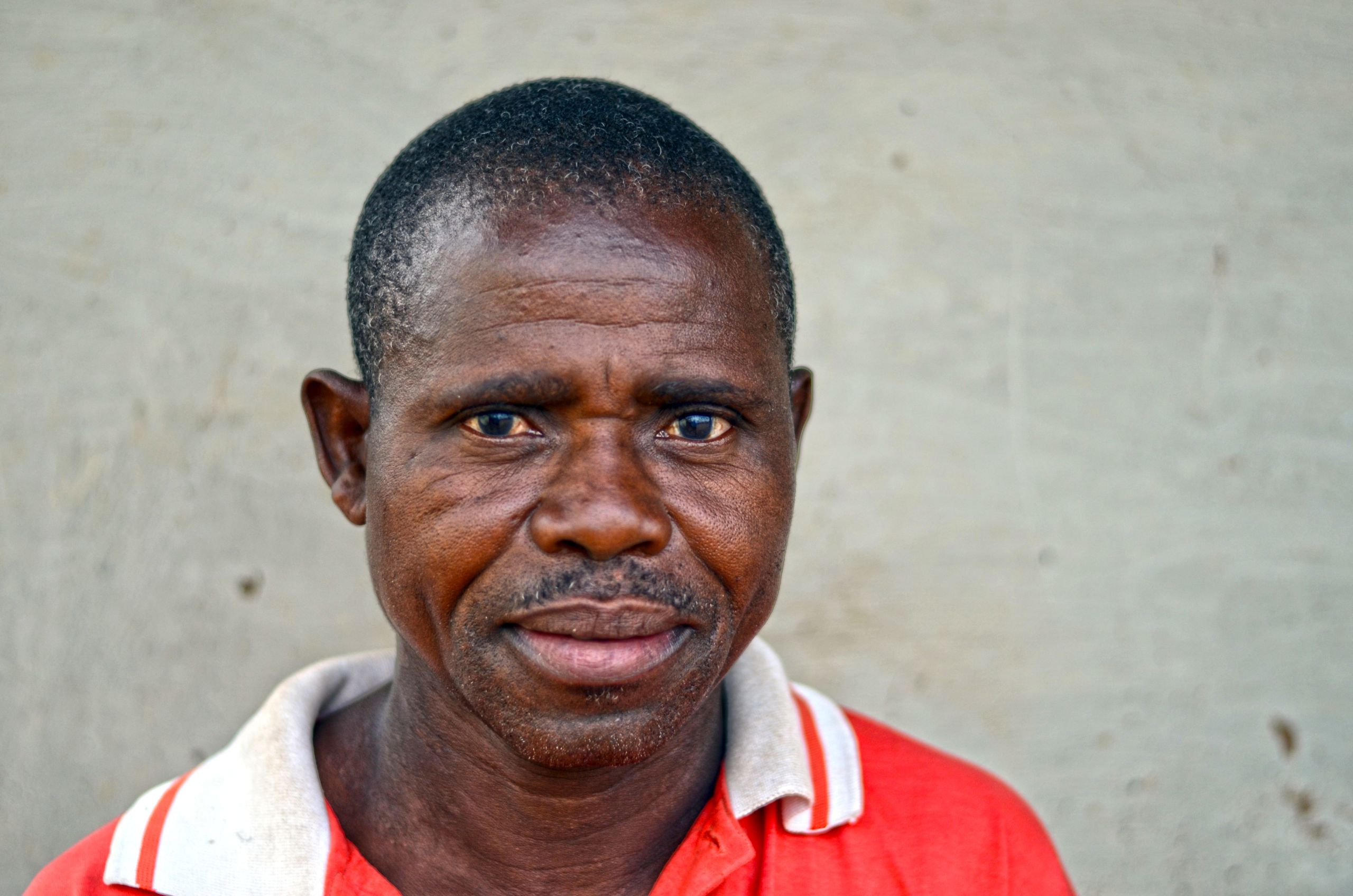
©BCI / Morgan Ferrar. BCI Farmer Henrique Cintura. Mecuburi District, Nampula Province, Mozambique. 2019.
©BCI / Morgan Ferrar. BCI Farmer Henrique Cintura. Mecuburi District, Nampula Province, Mozambique. 2019.
Water usage – To help build BCI Farmers’ capacity to safeguard water resources, preserve water quality and protect areas of high conservation value, BCI partnered with organisations including Helvetas, the Alliance for Water Stewardship and the High Conservation Value Resource Network to develop and deliver dedicated training to BCI Farmers in Mozambique.
Women’s empowerment - To help include more women in Mozambique’s cotton farming in the future, BCI commissioned a consultant to explore the issues that matter most to women cotton farmers and workers, including gaining equal work and decision-making opportunities. The findings fed into the development of BCI’s new Gender Strategy.
In Mozambique, Comparison Farmer data was not available because most of the cotton farmers in the country were already participating in the BCI programme.
*A proportion of BCI Farmers are also licensed under Cotton Made in Africa standard – a BCI equivalent standard in Mozambique – and their cotton production is not counted here to avoid double counting.
SOUTH AFRICA
HIGHLIGHTS AND CHALLENGES
Highlights
- 646 BCI Farmers, primarily large and medium-sized farms, produced 18,000 tonnes of Better Cotton in the 2018-19 cotton season, with large farms improving their approach to precision agriculture.
- Cotton farmers in the Northern Cape managed to sow and achieve relative success, despite a fifth year of drought.
Challenges
- Fewer farmers were licensed overall (compared to the 2017-18 season), with smallholder farmers unable to access the necessary government funding and support to grow cotton crops.
- Our Implementing Partner faced challenges in helping smallholder farmers navigate drought conditions (outside the Northern Cape, see above) in light of reduced government funding for the sector.
FARMER RESULTS OVERVIEW
In South Africa, some 646 BCI Farmers, primarily large and medium-sized farms, produced 18,000 tonnes of Better Cotton in the 2018-19 cotton season. This was an increase on the 11,000 tonnes of Better Cotton grown in the 2017-18 season, with large farms improving their approach to precision agriculture. However, fewer farmers were licensed overall (compared to 1,163 in 2017-2018) due to smallholder farmers facing challenges in accessing the necessary government funding and support to grow cotton crops. Building smallholders’ capacity and helping them gain access to vital funding and inputs remains an important priority for BCI in the years ahead. Better Cotton production in South Africa accounted for 37% of national production.
Water efficiency - Cotton farmers in the Northern Cape faced a fifth year of drought yet managed to sow and achieve relative success. Our Implementing Partner, Cotton South Africa, supported BCI Farmers in advancing their approach to efficient irrigation and helped them to adopt safer pesticides (derived from natural ingredients). It also mapped BCI Farmers’ fields using satellite technology, overlaying the images with known social and environmental risks to help farmers continuously improve their practices.
Other cotton-growing areas are in their sixth year of drought, and with reduced financial support provided by government for the cotton sector, our Implementing Partner faced difficulties in supporting smallholder farmers in navigating this challenge.
Child labour - BCI Farmers continued to show a high level of awareness on child labour issues as a result of joint efforts by our Implementing Partner and ginners (which influences smallholders in particular), and strict controls put in place by the labour ministry, particularly in the medium and large farm contexts.
In South Africa, Comparison Farmer data was not available due to local restrictions/sensitivities on providing comparison data
US
HIGHLIGHTS AND CHALLENGES
Highlights
- BCI Farmer numbers grew to 639 (across 17 states) in the US, up from 360 in the 2017-18 season.
- BCI Farmers continued to make progress on improving soil health, supported by universities’ extension services and the US Department of Agriculture, and are also adopting soil moisture analysis to guide their irrigation decisions.
Challenges
- Extreme weather damaged crops and diminished yields across the US Cotton Belt.
FARMER RESULTS OVERVIEW
The US Cotton Belt experienced testing times in the 2018-19 cotton season, with extreme weather damaging crops and diminishing yields. Despite these challenges, BCI Farmer numbers grew to 639 (across 17 states) in the US, up from 360 in the 2017-18 season. Better Cotton production in the US accounted for 8% of national production.
Soil health and water efficiency - BCI Farmers continued to make progress on adopting sustainable practices, with universities’ extension services and the US Department of Agriculture raising growers’ awareness of good practice on soil health, for example. This includes reduced tillage and cover crops of multiple species that protect the soil, deliver nutrients and enhance moisture.
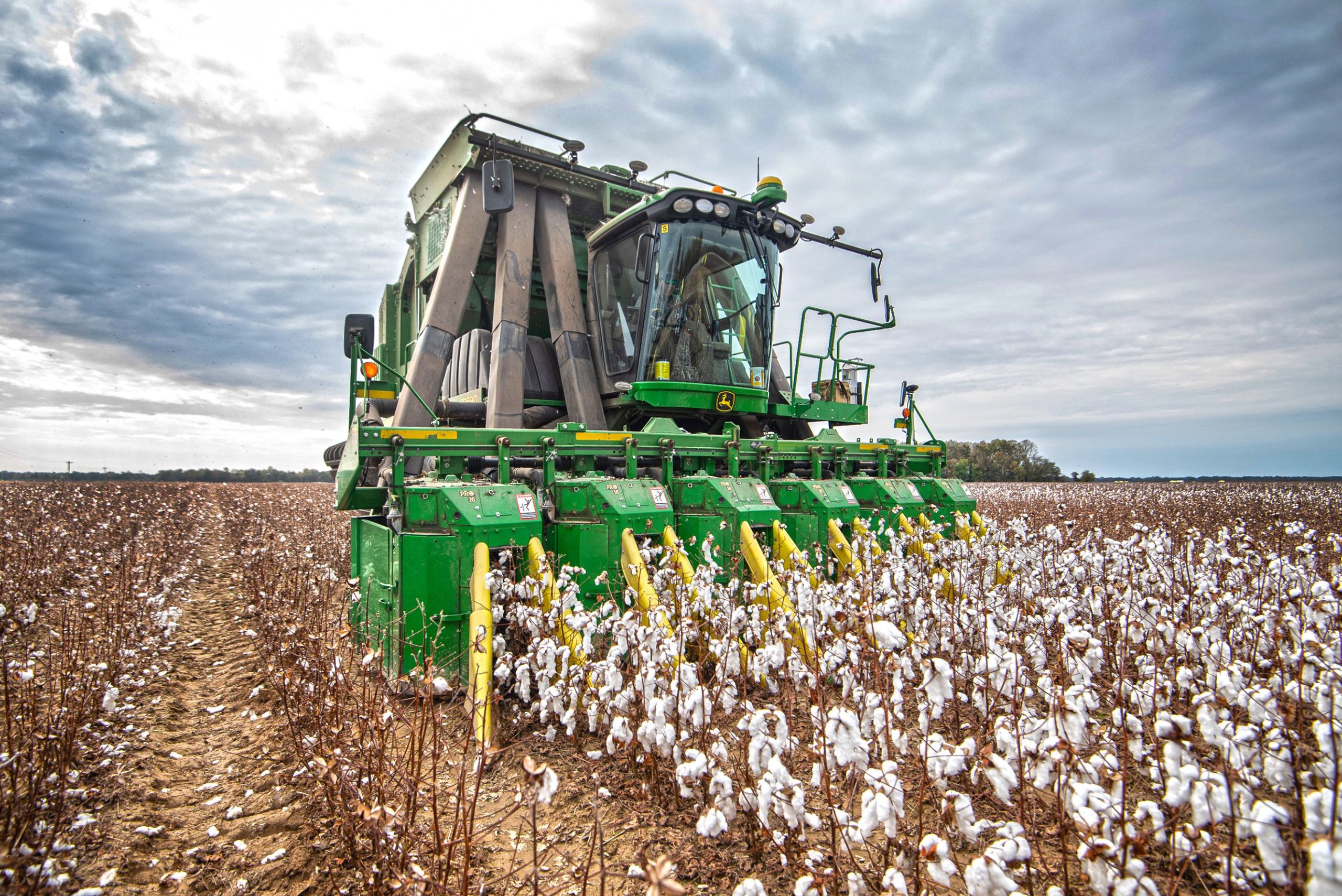
Growers are also increasingly adopting soil moisture monitoring equipment to guide their irrigation decisions. These practices will take time to deliver results, but over the longer term, they should lead to higher yields and profits. Some BCI Farmers also diversified their overall crop production and, in some areas, integrated peanuts into their crop rotation, further strengthening efforts to improve soil health.
BCI will continue to support BCI Farmers in adopting the revised Better Cotton Principles and Criteria as they also work to provide support to new growers.
In the US, BCI only works with Large Farms. Comparison Farmer data is not available because it is considered commercially confidential information.
BENCHMARKED PROGRAMME COUNTRIES
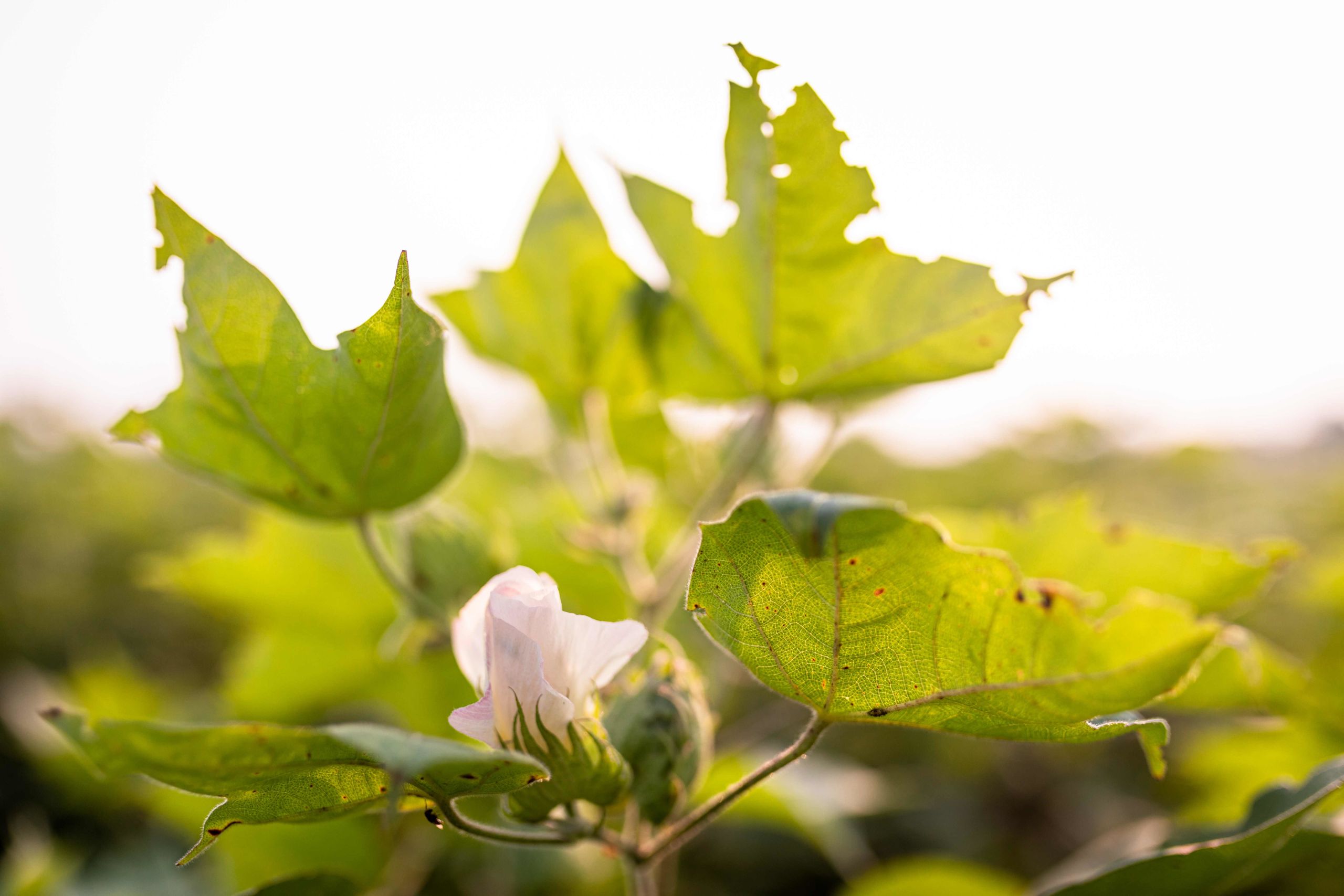
In Australia, Brazil and multiple African countries, farmers grow cotton in line with sustainable cotton standards, which have been benchmarked with the Better Cotton Standard and recognised as equivalent. Farmers growing cotton in line with these programmes can sell their cotton as Better Cotton. The myBMP standard in Australia is managed by Cotton Australia, and the ABR standard in Brazil is managed by Associação Brasileira dos Produtores de Algodão (ABRAPA). The Cotton Made in Africa (CmiA) Standard and Smallholder Cotton Standard (SCS) are implemented across multiple African countries, and managed by Aid by Trade Foundation (AbTF).
The CmiA and SCS Standards were implemented in Benin, Burkina Faso, Cameroon, Côte d'Ivoire, Ghana, Mozambique, Nigeria, Tanzania, Uganda and Zambia in the 2018-19 cotton season. BCI has a contractual agreement with AbTF to share data in a consolidated form, rather than on a country-by-country basis, therefore the CmiA-Standard updates are presented as one update below.
AUSTRALIA
The myBMP programme in Australia – benchmarked with the Better Cotton Standard – is managed by Cotton Australia.
HIGHLIGHTS AND CHALLENGES
Highlights
- By adopting precision irrigation techniques, supported by technological advances, Australian cotton growers have improved water use efficiency by 48% since 1992 (according to the Gross Production Water Use Index).
- Using precision technology to pinpoint soil and crop needs, farmers are able to apply pesticides and fertilisers efficiently and overall reduce total input use.
Challenges
- With ongoing drought conditions and reductions in irrigation water allocations, there was a significant decrease in Better Cotton production: halving from 231,000 tonnes in the 2017-18 cotton season to 92,000 tonnes in 2018-19.
FARMER RESULTS OVERVIEW
In the 2018-19 cotton season, Australia’s 77 myBMP-accredited farms (equivalent to BCI licensed farms) persevered despite a punishing multi-year drought. With dry conditions and reductions in irrigation water allocations, there was a significant decrease in Better Cotton production: halving from 231,000 tonnes in the 2017-18 cotton season to 92,000 tonnes in 2018-19. This volume accounted for approximately 21% of Australia’s total cotton production in 2018-19.
Water efficiency - In response to increasing water scarcity, some farmers in Australia are using precision technology to optimise water use and irrigation. For example, some farmers combine satellite imagery of their cotton crops with digital soil moisture readings and local weather data in order to determine exactly how much water to apply on a particular day. To further improve water efficiency, farmers use laser land-levelling equipment to enable more even water distribution and drop-down sprinklers to irrigate the crops with greater precision. Australian cotton growers have improved water use efficiency by 48% since 1992 (according to the Gross Production Water Use Index).
Pest management and soil health - Similarly, using precision technology to pinpoint soil and crop needs, farmers are able to apply pesticides and fertilisers efficiently and overall reduce total input use. For example, BCI Farmer Neek Morawitz upgraded his fertiliser application equipment with variable rate technology, allowing him to adjust the rate at which the fertiliser is applied according to the needs of the crop in different parts of the field. Read more.
Women’s empowerment - Another key focus for Cotton Australia is supporting women in cotton farming. The organisation is participating in a research project, ‘Understanding and Building Women’s Participation in the Australian Cotton Industry’, together with the Cotton Research and Development Corporation. The project explores the factors and barriers that prevent women from contributing fully in cotton production and the wider cotton industry. Find out more in the Australian Cotton Sustainability Report 2019.
BCI does not report on Results Indicator data for benchmarked programme countries. Learn more about Cotton Australia.
BRAZIL
The ABR Protocol in Brazil – benchmarked with the Better Cotton Standard – is managed by Associação Brasileira dos Produtores de Algodão (ABRAPA).
HIGHLIGHTS AND CHALLENGES
Highlights
- Brazil is the world’s largest Better Cotton producing country, with 2,027,000 tonnes of Better Cotton produced in the 2018-19 cotton season, a 34% increase on the previous season.
- Our partner ABRAPA continued to help cotton farmers improve labour conditions for workers, in line with more rigorous human rights legislation.
Challenges
- In a tropical climate with intense pest pressure, a key challenge for Brazilian farmers is how to address the phase-out of harmful pesticides as they seek to reduce their overall use of pesticides.
FARMER RESULTS OVERVIEW
Brazil is the world’s largest Better Cotton producing country, with 2,027,000 tonnes of Better Cotton produced in the 2018-19 cotton season, a 34% increase on the previous season. This volume was grown by just 312 ABR licensed farmers (equivalent to BCI licensed farmers), representing 76% of Brazil’s national production.
Labour rights - To help improve performance on labour rights, the Brazilian government has introduced more stringent labour rights regulations in the past few years. Our Strategic Partner ABRAPA has modified its own ABR sustainable cotton standard (recognised as equivalent to the Better Cotton Standard) to reflect this new legislation, and in 2018-19, continued to support farmers in taking action to help ensure better protection for workers.
Pest management - In a tropical climate with intense pest pressure (boll weevil and white fly, in particular), a key challenge for Brazilian farmers is how to address the phase-out of harmful pesticides, as they seek to reduce their overall use of pesticides. As part of our partnership agreement with ABRAPA, the ABR Protocol must respect BCI’s current Better Cotton Principles and Criteria, including BCI’s increasingly stringent approach to the phase out of Highly Hazardous Pesticides. The Better Cotton Principle on Crop Protection requires that “the producer must phase out the use of any pesticide active ingredients and formulations that are known or presumed to be extremely or highly hazardous (acute toxicity)”.
In practice, this means ABRAPA must not only update its standard in accordance with BCI’s recent revisions, but also support farmers as they seek viable alternatives for crop protection. We know that making these substantial changes will be challenging, and we are supporting ABRAPA in developing a roadmap to achieving these aims, as a cornerstone of our ongoing partnership.
BCI does not report on Results Indicator data for benchmarked programme countries. Learn more about ABRAPA.
AFRICA
MULTIPLE COUNTRIES
The Cotton Made in Africa (CmiA) Standard and Smallholder Cotton Standard (SCS) are implemented across multiple African countries and managed by Aid by Trade Foundation (AbTF).
HIGHLIGHTS AND CHALLENGES
Highlights
- The Cotton Made in Africa (CmiA) standard and the Smallholder Cotton Standard (SCS) were implemented in Benin, Burkina Faso, Cameroon, Côte d'Ivoire, Ghana, Mozambique, Nigeria, Tanzania, Uganda and Zambia.
- AbTF’s partners – CmiA-verified companies – offered more and improved training on good agricultural practices, as well as developing locally adapted solutions for farmers.
Challenges
- Severe droughts in a number of these countries and irregular rainfall patterns disrupted cotton growing.
- In these challenging conditions (and with some countries seeing low prices for cotton), some farmers opted to grow other cash crops such as soybeans or sesame instead.
FARMER RESULTS OVERVIEW
The Aid by Trade Foundation (AbTF) manages the implementation of the Cotton Made in Africa (CmiA) standard and the Smallholder Cotton Standard (SCS) – both benchmarked with the Better Cotton Standard – across 10 African countries. Cotton grown to these standards can also be sold as Better Cotton. In the 2018-19 cotton season, the standards were implemented in Benin, Burkina Faso, Cameroon, Côte d'Ivoire, Ghana, Mozambique, Nigeria, Tanzania, Uganda and Zambia. Overall, 822,371 CmiA benchmarked farmers produced 576,000 tonnes of cotton.
Severe droughts in a number of these countries and irregular rainfall patterns disrupted cotton growing in the 2018-19 season, with shorter and later than expected periods of rain affecting healthy plant growth, and heavier rains washing away seeds or damaging crops. In these challenging conditions (and with some countries seeing low prices for cotton), some farmers opted to grow other cash crops such as soybeans or sesame instead.
Despite, this AbTF’s partners – CmiA-verified companies – offered more and improved training on good agricultural practices, as well as developing locally adapted solutions for farmers, such as natural molasses traps to manage cotton pests.
AbTF continued to share knowledge among all partners in the 2018-19 cotton season through regional workshops, including Standard review workshops in Zambia and Côte d’Ivoire, as well as visits to supply chain partners, including spinning mills and textile manufacturing plants. In the final quarter of 2018, AbTF also welcomed a delegation of retailers and brands to Uganda to demonstrate improved supply chain transparency.
BCI does not report on Results Indicator data for benchmarked programme countries. Learn more about Cotton Made in Africa.
LOOKING AHEAD
Covid-19 Implications on Farmer Results Reporting: 2020-21 Cotton Season
In June 2020, BCI announced a change to Results Indicator (RI) reporting requirements for the 2020-21 cotton season. Results Indicator data record-keeping and reporting is compulsory for all BCI Farmers in order to maintain a BCI licence. Due to the Covid-19 pandemic, however, we anticipate disruption to the process of recording farm-level information, collecting data and reporting it to BCI. Because of this, we may face challenges in analysing the data we receive.
To enable our Implementing Partners to collect data more efficiently and cost-effectively under the current circumstances, we have made the following changes for the 2020-21 cotton season. We have: 1) reduced the sample size for smallholder Producer Units, 2) removed the requirement to report comparison farm data in most countries, 3) focused on the key elements of data only, and 4) begun communicating the smallholder farmer sample early in the season. We will share more information on this in 2021.
- The reduced sample size will have a 95% confidence level* and a 10% margin of error (previously 5%).
- BCI’s next evolution in its Farmer Results analysis and reporting phases out Comparison Farmer data and focuses on monitoring change over time. This will provide a more accurate reflection of BCI’s ethos of continuous improvement and will enable us to measure our contribution to achieving the UN’s 2030 Sustainable Development Goals.
- We have simplified the profitability indicator, so farmers will report the total income and total variable costs. We will therefore have less visibility this season for programmatic learning purposes on the breakdown of production costs.
- We are revising the child labour issue awareness indicator and have removed the requirement for partners to report it this season. We will include a strengthened indicator within the BCI-led Delta Framework – a new measurement and reporting framework designed to allow standardised and comparable reporting of sustainability progress across agricultural commodities. Meanwhile, the BCI Assurance Programme continues to assess farmers’ compliance with the Better Cotton Standard requirement of no use of child labour.
- We communicated the sampling requirements for smallholder Producer Units to Implementing Partners earlier in the season to provide more time for data collection and compilation.
*The confidence level tells you how sure you can be. It is expressed as a percentage and represents how often the true percentage of the population who would pick an answer lies within the confidence interval (also known as a margin of error). The 95% confidence level means you can be 95% certain.
